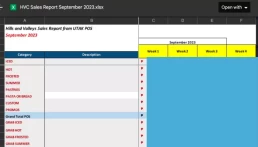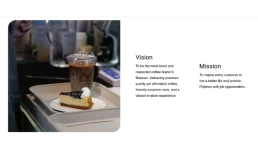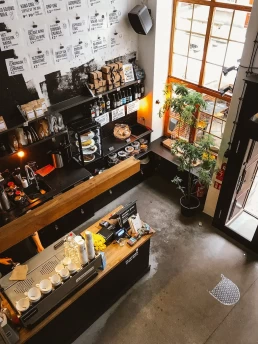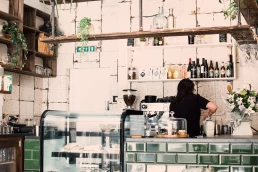How to Compute Expected Daily Sales of Coffee Shop in the Philippines
Knowing your numbers is one key to growing your cafe business. Whether you’re an aspiring coffee entrepreneur or an established one, you should know the expected daily sales of your coffee shop in the Philippines.
Expected Daily Sales of Coffee Shop in the Philippines
Daily sales are among the first numbers to track when managing your coffee shop. By knowing how much cash and non-cash transactions go into your store from any purchase transaction, you’ll get to know if the cafe business is thriving or not.
Daily sales knowledge allows you to be more flexible and adaptive to every change happening in your local market.
For instance, if you know that your weekends must have an average daily sales of Php 15,000 to Php 25,000, and you find out four consecutive weekends to be lower than your expected daily sales, you could now make adjustments either with the quality of coffee you brew (to get returning customers), or promote even better to acquire new coffee lovers.
You can’t simply ignore knowing your expected daily sales, as this can help guide your rational decision in running and sustaining your cafe.
9 Easy Steps to Compute for Daily Sales of Coffee Shop
Now, let’s proceed to how you can compute the daily sales of coffee shops.
1. Record Every Sale
You first need to have a recording of every transaction in your coffee store.
The most convenient and effective way is to have a point of sale (POS) system so your baristas can easily input transactions on a tablet or any compatible device.
Tip: We use Utak POS in our coffee shop in Bulacan. It is an affordable POS in the Philippines (we don’t get commissions for recommending them).
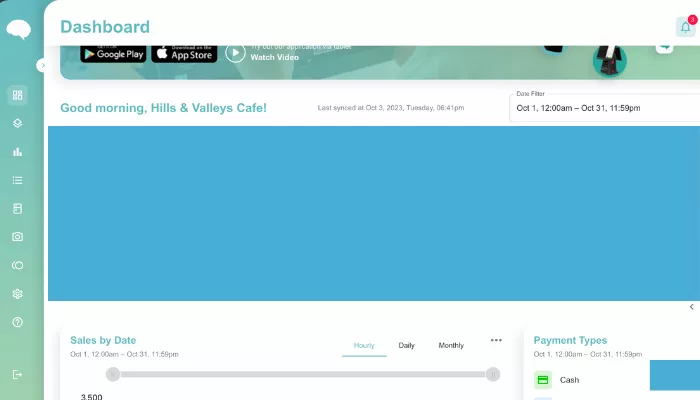
There are also alternatives to POS, such as a cash register or manual recording system to track every sale made during the day.
See what fits your cafe, but I highly recommend investing in a POS to efficiently track numbers and monitor daily sales when you’re not around the cafe.
2. Categorize Sales (optional but helpful)
This step is optional, and you may skip this. But if you want to be more detailed about the sales numbers, you can break down sales into categories such as beverages, pastries, and merchandise.
This way, you can determine which products are popular (best-selling for the month) and profitable.
3. Tally Up Total Sales
To get the total sales, you sum up the total amount from all sales transactions. This includes all transactions from every product you sell within the day. This will give you the gross sales for the day.
4. Deduct Returns/Refunds
Check if there were any returns or refunds during the day. If you have delivery apps like FoodPanda and GrabFood, you can check your emails for any refunds within the day.
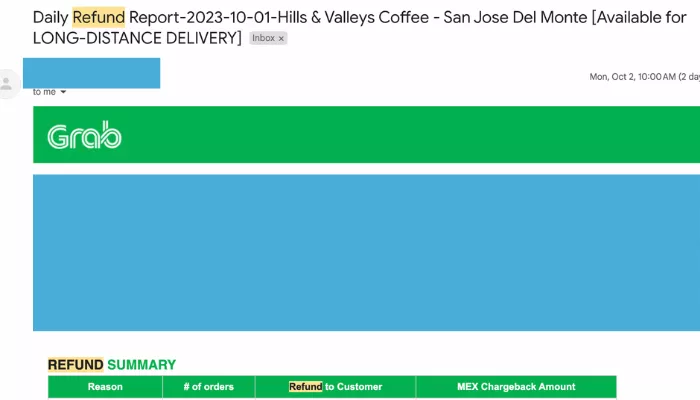
Deduct these amounts from the gross sales to get the net sales.
5. Factor in Discounts and Promotions
If you offer discounts or promotions, account for these reductions in your daily sales.
See the exact amount of each discount and promotion. This would give you the right amount of daily net sales.
6. Include Taxes
Cross-check that taxes are included in your sales amount among your POS and cash registers.
For the most part, taxes are shown separately in receipts, so adding them can quickly get the total sales.
7. Review Cash and Non-Cash Transactions
Review the total for each type if you accept multiple payment methods (e.g., cash, bank accounts like BPI, credit card, Gcash). This ensures your cash drawer matches your recorded cash sales and all electronic transactions have been processed correctly.
8. Double check
It is easy to lose track of the accurate amount. So, it is always an excellent practice to double-check your calculations. If you’re using a POS system, it could give you a daily sales report that looks like this:
You can cross-reference the total amount from POS with manual counts.
9. Document and Store
Ensure you document everything in your cafe business, including your daily sales. You can use spreadsheets, your POS system output reports, or as simple as a physical ledger.
All these documents you can use for accounting and tax purposes, as well as in tracking business performance.
How to Increase Daily Sales Of Your Coffee Shop?
Now that you know how to compute and track your daily sales, applying some of the best practices to increase daily sales is also essential.
Of course, tracking your numbers is good, but more importantly, you should sustain and grow your cafe business even more.
So, here are five ways to increase daily sales of your coffee shop:
1. Find a location with high foot traffic.
This is primarily applicable for starting cafe owners as they have the freedom to choose a store with good traffic of customers.
An established coffee entrepreneur who wants to expand their coffee shop in other locations (either through coffee franchising or a company-owned system) must be looking for a place with high foot traffic.
2. Build your brand.
In Asian countries, particularly in the Philippines, you’ll find coffee shops opening streets in between.
You need to build your brand to differentiate yourself from other local cafes. Ask yourself, “What makes your cafe uniquely different?”.
By focusing on branding with all your marketing efforts, you gain buzz around your local cafe, acquiring new customers and enticing loyal customers to make additional purchases.
Learning and applying fundamentals and tips on promoting your coffee shop is best.
3. Do competitor analysis.
One of the best ways to increase daily sales is to analyze what your competitors are doing.
This is not to mimic every detail of their business activity but to see their strengths and weaknesses, all while spotting opportunities you can take advantage of.
For instance, one audience group we managed to build stronger and deeper relationships with at Hills & Valleys Cafe - teachers. They usually conduct their meetings inside our cafe, allowing us to get recurring bulk orders every week. It also gives you free word-of-mouth marketing within the campus community.
Here are a few insights you can get from doing competitor analysis:
- Gaining traction on a specific platform or marketing channel your competitors aren’t investing in.
- Targeting a group audience (example above), other cafes aren’t strengthening relationships with.
- Promotional activities that have worked for them that you can innovate better to suit your target audience.
Competitor analysis is critical in enhancing your cafe’s branding and ability to capture a larger market share for your business.
4. Maximize the seasonality of products.
One significant insight in managing your coffee shop is understanding the seasonality of your products. You’ve got a primary menu, but there are seasonal beverages that are best to sell during one season.
For instance, you have a Peppermint beverage, suitable for the Christmas season, and another, a Refresher drink, best for the summer season.
You can maximize these seasonal products by creating promotional campaigns like BOGO to entice early sales for the day.
5. Adjust the pricing on offers.
A coffee shop's day-to-day operations may seem routine, but at times, you don’t take the time to pause, reflect, and evaluate what’s happening in your store.
Adjusting the offers' pricing is a good tip to increase expected daily sales. Remember that you should do it cautiously, as your customers might find that you’re taking advantage of them, which could negatively impact sales.
The best thing is to find the right timing when increasing prices for some of your products. For example, when you see inflation happening in some of the ingredients of your products, it is a good, reasonable way to adjust your pricing.
Announce the price adjustment. It is imperative to do it so your customers would know beforehand - a sign of respect for them as your loyal customers.
Key Takeaways
Knowing your numbers is one of a cafe entrepreneur's incredible, essential abilities. By having a good look at your expected daily sales, you can think of any improvement to do for your cafe operations and sustain to expect even more growth.
How to Write Your Cafe Mission and Vision Statements
One of the crucial success factors of starting a coffee shop is establishing a cafe mission and vision that is relevant and practical for people working in the coffee shop business.
In this article, I’ll give you practical ways to create your cafe mission and vision and turn it into reality by regularly communicating it to your employees.
Let’s get started.
Why Your Coffee Shop Needs a Mission and Vision Statement?
Most business owners, in general, think that mission and vision statements are ‘cliche' and are a waste of time.
But the reality is an organization's mission and vision statement significantly impact the lives of people working for it. It resembles how employees engage in their jobs and how they can be more successful in their field of work, whether as a barista or finance assistant.
Here are some compelling reasons why you need to craft or communicate your cafe mission and vision statement:
1. It gives direction to your business.
In the fast-changing times where the cafe business and cafe franchise operate today, many more distractions might affect the focus of the cafe owner and their entire team.
That said, the vision and mission statement direct the team's direction.
With it, they may do their daily work and find it exciting to work on the same routine tasks/jobs.
The mission and vision fire up employees, knowing that they don’t have to be excellent at work to pay their bills but instead go to another level of doing something that matters to others. This means they’re sending payroll reports to their employees (as HR assistants) or being on the front line, brewing coffee - all these work contribute to the entire organization’s mission of impacting the community.
2. It sets the cafe apart from its competitors.
Branding refers to unique differentiation. If you can find the unique characteristics of your products, then you have a branding worth sharing.
What would give you better branding is very internal - your cafe mission and vision statement. This is the core of everything you do.
The main reason why vision and mission set you apart is the unique impact you can create on other people’s lives. For the most part, the vision could be very personal to the founders themselves.
It may relate to their personal stories or something in their lives that they want to impart to their customers.
So, it is not a cliche statement but a form of core values the organization embodies.
Further Reading: 11 Coffee Shop Promotional Ideas
3. It guides you in hiring the right talents.
Every cafe will have to hire employees in every stage of its existence.
Particularly, if you’re opening your store, you want your first set of employees (pioneers) to be the ones who will collectively possess the correct values you want for the organization.
That goes with the values and mission the entire team must pursue daily in their field. This is advantageous for starting teams to identify which job applicant will be the best fit based on the culture they’ve set (“culture fit”).
Culture fit enables cafe teams to work in harmony and teamwork - making it a solid organization that addresses operational issues and serves customers at the highest level (“customer experience”).
Difference Between Cafe Mission and Vision Statement
The vision statement of your cafe is what your organization wants to become (it focuses entirely on tomorrow). At the same time, your mission statement is what an organization does to achieve your ‘vision’ - targets on your current actions today.
It’s as simple as that.
So, let’s go to how you craft your cafe mission and vision statement.
How to Write Your Coffee Shop Vision Statement?
Your vision statement must reflect the future of your cafe - what your coffee shop wants to become.
In my local coffee shop, Hills & Valleys Cafe, we (Me and Adrianne De Guzman) crafted our vision statement:
Hills & Valleys Cafe Vision Statement:
“To be the most loved and respected coffee brand in Bulacan, delivering premium quality yet affordable coffee, friendly customer care, and a vibrant in-store experience.”
Why this vision statement works:
- It is specific in location (achievable). We only want to be the most respected coffee shop in Bulacan.
- Intangible. Though vision must be tangible in numbers, we want to lean more towards our customers. “Most loved” could be measured in both quality and quantity. Quality in terms of the customer experience they have in our stores. Amount in terms of monthly sales we generate each month.
- Unique differentiation - branding. Our branding mainly focuses on targeting mid-level customers. This means that we offer premium quality yet affordable. Among coffee shops in the Philippines, most would target high-level customers, those who can pay more than 160 pesos per cup, while others would target low-income customers - those who could spend 70 pesos per cup. Ours targets mid-level customers (those who can afford 100 to 165 pesos per cup).
A vision statement could also be a vision script.
Michael Hyatt, a business leadership expert, coined and described the term “vision script”.
A Vision Script is a robust document, written in the present tense, that describes your future reality as if it were today. The trick is to step into the future and record what you see in four critical areas of your business: your team, products, sales and marketing, and impact.
Returning to your audience targeting is essential when writing your vision statement or vision script. Who will you target in the next 5, 10, or 20 years? Of course, it will change as the market and business landscape change, but you should identify your target market - as that could be part of your vision.
Describe your cafe’s long-term accomplishments and expectations in writing your vision statement. Do you want to be a leading cafe cart in the Philippines? Or maybe you want to go to the most aesthetic coffee shop?
Remember that your vision statement depicts your future cafe.
To help you out, here are five things to consider when writing your vision statement.”
Inspiring
Most importantly, you want your vision statement to inspire your employees to improve their work and personal lives.
As you write your vision script, think if it’s something that can inspire people. And not only employees but when someone walks into your store and sees your vision board. The moment they saw it, there could be an awe from their eyes and a little bit of curiosity in asking why it is your vision statement.
Realistic
Your vision script or statement is ideal but realistic. It must be achievable in years and could be something your team can execute.
Any vision statement must give you a reality to look at, either internally among your team members or from an external standpoint, looking at your target market and community.
Branded
Your vision statement must include your unique differentiation. Again, what sets your cafe apart from its competitors? The vision must include branding so your customers feel your restaurant is explicitly serving them.
Understanding your customers’ points, challenges, and problems is crucial in determining the branding you need in your vision statement.
Progressive
In today’s time, your vision could only last for three years after you accomplish it. In other words, your vision script must be progressive. As you gain more success, you must remember that your vision also changes according to the status and potential of your cafe.
The more you win as a coffee shop, the more frequently you must change your vision statement.
How to Write Your Coffee Shop Mission Statement?
After you craft your vision script or vision statement, write your coffee shop mission statement.
Mission statement is about the “now” - what your cafe currently does.
At Hills & Valleys Cafe, our mission statement goes like this: =
Hills & Valleys Cafe Mission Statement
To inspire every customer to live a better life and provide Filipinos with job opportunities.
Here are three primary considerations when writing your cafe mission statement:
- What does your coffee shop do?
- How does your coffee shop do what it does?
- Who does your coffee shop serve?
If you summarize it, the mission statement is about the “doing part” of your cafe.
When writing your cafe mission statement, remember to make it short. You should easily communicate it with your team members (baristas, HR assistants, managers, or admin assistants) so well that you don’t have to read it entirely on paper.
You could also include your cafe's purpose “why” in your mission statement. This allows your team to be more action-oriented in their approach toward work.
Overall, you have to reference the present of your cafe. “What it does” is a significant component of your mission statement.
How to Avoid Mistakes When Writing Your Cafe Vision/Mission Statements
You may be ready to craft your vision and mission statement within a few minutes. But be careful as you could make mistakes when doing it in a rush.
Here are some tips for avoiding mistakes when writing your vision or mission statements.
1. Think about it carefully.
You don’t have to rush ideas. At some point, you may reflect on what you want your cafe to be—other times, you would be blacked out of ideas.
Relax. Be calm.
It is vital to have a peaceful mind when thinking of your vision/mission statements.
Ask your team to come with you and collaboratively work on your vital statements. You don’t have to be alone when crafting your vision/mission statements. One of your team members might have a great insight you would otherwise have missed if you didn’t include him in the brainstorming.
2. Simplify.
Refrain from suffering your team from the curse of knowledge, which refers to trying to overload your vision/mission statement with too much information.
The best way to determine if you make an excellent vision/mission statement is when you can share it with a kid.
The simpler your statements are, the better you can communicate them to your teams. Simplify the complexity of your cafe.
3. Reflect upon your core values.
Your core values are what you stand for as a person. You have exciting moments where you reflect upon certain things that remain your ground whenever challenges, issues, and problems arise.
When writing your vision and mission statements, reflecting upon your core values is best. Your core values would be the foundation of your cafe. And at most, if you know what you stand for, it would be easy for you to see where you are going (“vision”) and what you should be doing (“mission”).
Remember, vision and mission statements are personal in you as a cafe entrepreneur.
Coffee Shop Vision and Mission Statement Examples
1. Starbucks
Starbucks Vision Statement: To establish Starbucks as the premier purveyor of the finest coffee in the world while maintaining our uncompromising principles while we grow.
Starbucks' Mission Statement: to inspire and nurture the human spirit — one person, one cup, and one neighborhood at a time.”
2. The Coffee Bean & Tea Leaf
The Coffee Bean & Tea Leaf Mission Statement: To create a spirit within our company that inspires our team members to provide our customers with a total quality experience
The Coffee Bean & Tea Leaf Vision Statement: To be "Simply the Best" roaster and global specialty coffee and tea retailer.
3. Tim Hortons
Tim Hortons Mission Statement: There’s more to Tim Hortons than great-tasting coffee. We work hard to deliver the highest-quality products and services and strive to be a leader in everything we do. It’s that simple.
Tim Hortons Vision Statement: Our vision is to be the quality leader in everything we do.
4. Dunkin
Dunkin' Mission Statement: To be the leading provider of a wide range of delicious beverages & baked products around the kingdom in a convenient, relaxed, friendly environment that ensures the highest quality product and best value for money.
Dunkin' Vision Statement: To be consistently the desired place for great coffee beverages and delicious complementary donuts & bakery products to enjoy with family and friends.
Key Takeaways
Writing your cafe mission and vision statements isn’t easy. However, building the proper foundation for your coffee shop is crucial. So, make it a goal to brainstorm it yourself or with your team. Communicate these statements with your entire team so you will be working on the same goals.
11 Coffee Shop Promotion Ideas For 2024
Learning how to promote your coffee shop after establishing the operations is crucial to success. With all the technological advancements and resources available, which would you use to market your cafe?
In this guide, I’ll walk you through 11 coffee shop promotion ideas and even share practical examples you can apply to your cafe immediately.
Let’s get started.
11 Coffee Shop Promotion Ideas For 2024
1. Holiday and Seasonal Events
Every month has its share of seasonal events and holidays you can use to promote your coffee products. In the Philippine context, we have an average of 18 holidays you can prepare in advance.
What works for us at Hills & Valleys Cafe is preparing for every holiday and season with two main objectives:
- Entice new potential customers to visit the store (i.e., Buy 1 Take one promo)
- Launch new products during holidays
We’ve found these two very effective as you give customers a good reason to purchase existing or new products.

Pro tip: You can use ChatGPT to generate ideas for holiday or seasonal marketing campaigns.
You can use this prompt:
Give me 10 engaging marketing titles for our new [PRODUCT] launch to be promoted during [HOLIDAY]. Make it compelling and easy to understand.
From these ideas, you can choose what fits your coffee shop and create a holiday or seasonal campaign for your customers.
2. BOGO (Buy One Get One)
Buy 1 Take One promotion is a conventional marketing campaign to entice people to purchase more beverages from your store, increasing monthly sales.
Appropriately done can help you acquire new customers who are looking to get money for value from their pockets.
Conversely, if you did it wrong, it could skyrocket your expenses, decreasing your monthly profits.
Your product launch is the best way to start a BOGO marketing campaign. You want your customers to taste your new coffee beverage while being affordable so you can reach as many customers as possible.

Pro Tip: You can combine seasonal and BOGO campaigns, where customers can enjoy buy-one-get-one beverages during the holiday season.
3. Discounts For Students or Teachers
This applies to local cafes near schools and universities.
You can offer a little discount to students or teachers (or both), and you’ll have them as your recurring customers.
The best thing about this strategy is retaining a specific group of customers and increasing group transactions in your store.
Pro Tip: Do a Meta Ads campaign and promote your discount targeted to students and teachers. Before the launch, set up the campaign so you’ll benefit from early visibility for your store.
4. Local Partnerships
Local partnership builds connections and trust among nearby businesses and establishments that can cross-promote your coffee products with their services.
By being in touch with local businesses within your area, you’ll start to build stronger bonds that are mutually beneficial for companies.
For example, we’ve created a solid local partnership with a local gym brand near our store. Given they have five branches in our area (San Jose Del Monte, Bulacan, and other cities in Cavite, it’s a plus to get our brand out to their existing clients.

This brought groups of fitness enthusiasts to our store, increasing our monthly sales.
How do local partnerships work?
Think of a marketing campaign to give discounts, freebies, or value to their customers or clients. It should be something enticing that the business owner would want to grab the opportunity.
Ask the business owner if they want to give discounts to your customers so they can capture your existing buyers.
Create a win-win scenario where both parties (you and the other business owner) get their desired customers through a BOGO or discount marketing campaign.
5. Invest in Meta Advertising
One of our early wins at Hills & Valleys Cafe is the customers we gained from Facebook. By leveraging Meta Advertising weeks before our store opening, we were able to promote our brand to people within our target town.
This helps increase our brand awareness because most of our target market engages in this social media platform.
Here are some tips to leverage Meta advertising (both Facebook and Instagram Advertising) to promote your local cafe or coffee franchise.
Create a campaign with 3 Ad Sets. Each Ad Set is targeting three interests.
To give you a quick understanding, I’ve created this image so you can see how it works.

So, for the three Ad Sets, here’s how it looks like:
- 1st Ad Set (MOST NARROW)- 3 interests overlapping
- 2nd Ad Set (MEDIUM) - 2 interests overlapping
- 3rd Ad Set (MOST BROAD) - 1 interest
You can test which audience will resonate with your customers by targeting these three audience groups with different interest intersections.
Add more budget to the adset where ads are highly performing. Or distribute it to adsets with significant ROI regarding clicks and leads/inquiries.
6. Claim Google Business
Google My Business is a free Google service that lets you create a business listing online.
Once your account and data have been verified by Google, you’ll see your business displayed on Google Maps. And when your coffee customers start looking for your brand on Google, they’ll start seeing your map location, an image, and all the general business information you input.
Follow this procedure to create or claim your GMB Listing. You’ll be asked to fill out many fields related to your business's specifics. In the Philippines, we have to do the traditional way of entering a code via snail mail to verify your account entirely.
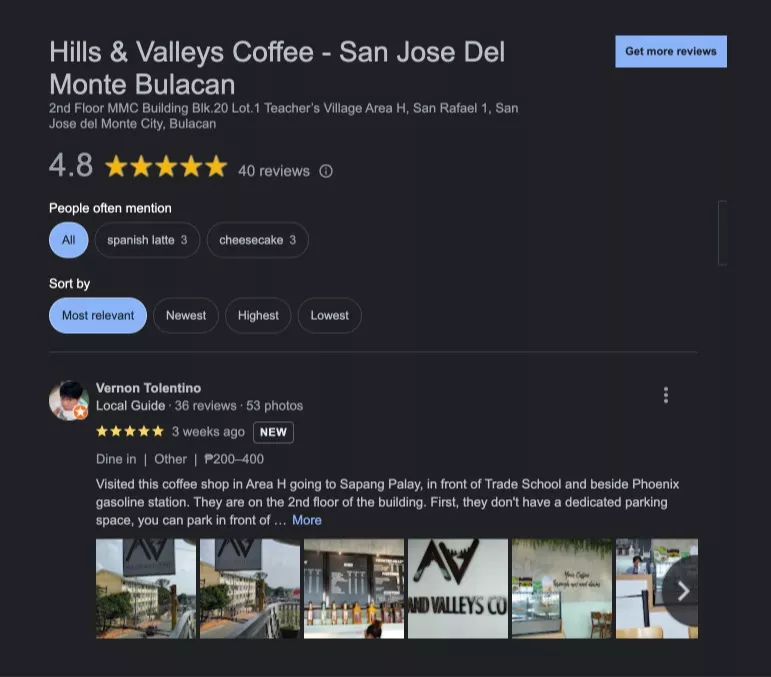
Ensure you include accurate information about your business - NAP, which stands for Name, Address, and Phone Number.
Take photos of each area of your store and upload them to GMB. The higher the resolution of your images, the better.
And to rank your GMB better on local map packs, you must ask for reviews from your potential customers. The more reviews you have, the more chances you can climb the map pack rankings faster.
One of the best ways to provide feedback on your store and products is to incentivize them with freebies (or discounted products).
Many potential customers search on Google when they’re looking for a cafe near their place (or when they visit a particular tourist spot - e.g., Tagaytay).
And when your Google My Business ranks for keywords like “coffee shop in Tagaytay,” you’re likely to increase visibility for those customers and get more foot traffic to your store.
This leads to our next coffee shop promotional strategy: creating your website.
7. Create Your Business Website
Having a business website is a minimum requirement in marketing a coffee shop. It displays your store address, store hours, and contact information, and you can also use it to promote your coffee shop.
SEO, or search engine optimization, is one of the digital marketing disciplines that aims to optimize the website to rank on its target keyword on Google’s search engine results pages (SERPs).
You want to rank for “coffee shop in Baguio.” You optimize your homepage for the key phrase, “coffee shop in Baguio,” so you’ll have chances to rank for it.
And through online rankings, you get visitors who’ll be curious about coffee shops and could add up to foot traffic for your local cafe.
Here are a few tips when doing SEO for your local cafe:
- Include your target keyword in the page URL (/coffee-shop-in-baguio/), or it is your homepage. You simply add the keyword in your meta title.
- Add the keyword in the meta description, H1, H2s, and first sentence.
- Publish an “about”, “history”, and contact pages.
- Include all relevant information about your cafe, including store hours, address, menu, and Google Maps.
The goal is to make it easy for potential customers to visit your store by providing all relevant information.
Pro Tip: Include a Meta Chat Plugin connected to your Facebook page. So when someone wants to ask a question about your cafe, you’ll receive it straight using your Meta Page.
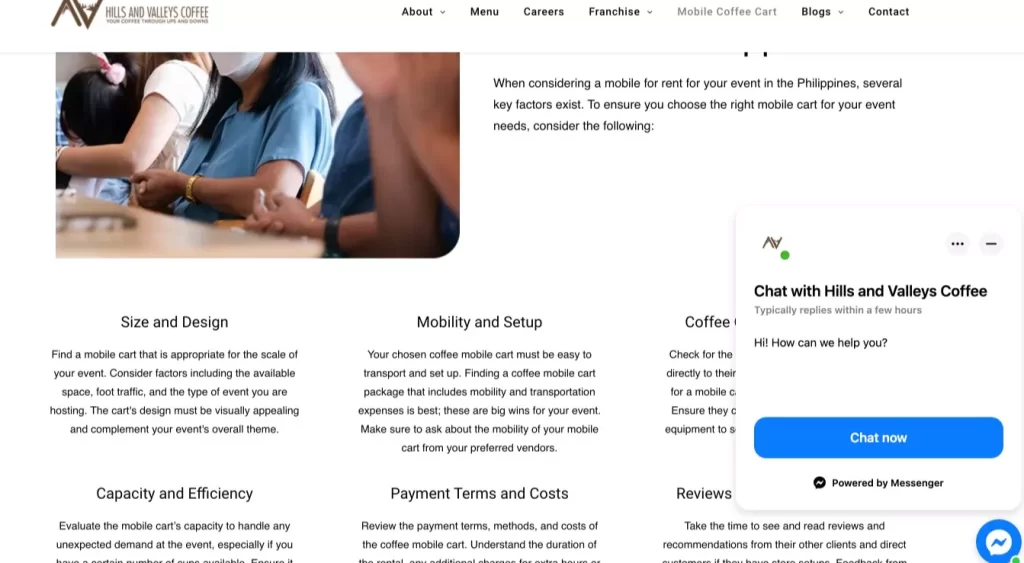
8. Create a Loyalty Program
One effective method to retain your customers is to create a loyalty program.
A loyalty program helps you to entice people to purchase recurring transactions every week (if not every day) and get the most benefit from your products by offering a more affordable option.
At Hills & Valleys Cafe, our loyalty cards allow customers freebies on their 3rd, 5th, 7th, and 10th transactions. At the 10th transaction, let’s say they’ll get a free coffee of any size.
More tips on creating a loyalty program:
- Determine your best-selling coffee/drinks and include it as part of your loyalty program, i.e., they get this free best-selling drink at the 10th purchase.
- Design your loyalty program at its best. Make it glossy and easy to carry in customers’ pockets.
- Sign every loyalty card as proof of purchase. Train your baristas to do so.
9. New Product Launches
New product launches are a great way to promote your coffee shop. Not only do you encourage customers to buy new products, but you can also use them to support other products on your menu.
You can integrate it into other coffee shop promotional strategies like seasonal or holiday campaigns.
When launching new products, the good part is you add excitement to your customers, giving them more reasons to buy more and repeatedly from your local cafe.
Pro Tip: Think of a new beverage (drink/food) every 3 to 4 months. And aim to launch them to attract new customers and retain loyal ones.
10. Exclusive Of Stores For Events
One of the uncommon promotional strategies for local cafes and restaurants is allowing customers to use the store venue exclusively.
This means they’ll pay for 2 to 4 hours and use it for business meetings or personal gatherings like bridal showers, presentations, seminars, pre-nuptial celebrations, or a simple hangout with friends.
Think of how you can create an exclusive event program that may or may not include consumables of your products.
For example, at Php10,000, your client can use the store for 2 hours, with Php10,000 worth of drinks and food.
So, based on your target audience and location, how can you incorporate an exclusive store for events.?
11. Grow Social Media Profiles
63% of consumers use social media to find new restaurants or explore new menu items.
This paves an important truth that every cafe or restaurant should start and grow their social media profiles.
Not only targeting likes and followers but aiming for the main goal - driving foot traffic to your local cafe.
Actionable tips to grow your social media following:
- Identify your target audience.
- Base your messaging on your audience groups so you can empathize and resonate your content with them.
- Set a content calendar to schedule every content asset on your social media profiles.
- Create content that targets your target customer's pain points, challenges, and needs.
- You can use ChatGPT to generate content ideas and even write captions for your social media profiles. Be more specific with your prompts.
- Use Meta Advertising to get direct conversions - messages or inquiries to your website.
- Collaborate or tag other local business partners and cross-promote their products or services.
- Post user-generated content (images of your customers in your store, sipping your coffee, and other photos snapped by your customers).
Build Your Branding For Your Local Cafe
You’ve seen how to promote your coffee shop using 11 different marketing strategies, done online and face-to-face setups.
Assess your resources and determine which promotional strategy best suits your needs, context, and preferences.
List of Raw Materials For Coffee Shop
A list of raw materials for a coffee shop makes your baristas familiar with what they need to brew a perfect espresso.
Whether you want to open a cafe or search for how much each raw material costs?
You need two lists: raw materials to create a coffee beverage and coffee supplies.
Let’s dive in.
List of Raw Materials For Coffee Beverages
- Coffee Beans - choose Arabica or Robusta, or your signature blend for coffee beans. These are seeds of the coffee plant, roasted and used in espresso machines to produce a rich and aromatic espresso.
- Milk - is used for hot and cold coffee beverages as an added sweetness to the taste.
- Sweetened Milk - a sweetener that enhances the taste of a specific coffee beverage (e.g., Spanish Latte).
- Heavy Cream is a thick dairy product for whipped cream, breve, and frapped-style beverages.
- Whipped Cream - is used heavily for frapped types of beverages, like the one you see in Starbucks Frappuccino drinks.
- Syrups - concentrated solutions of sugar in water used to sweeten drinks and desserts, come in many fruit and traditional flavors, i.e., caramel, white mocha, French vanilla, and hazelnut.
- Sauce is a liquid or semi-liquid condiment that adds flavor or moisture to coffee and non-coffee beverages.
- Chocolate Bar - solid blocks of chocolate ranging from sweet to bitter, best for mocha, chocolate coffee, and non-coffee drinks.
- Matcha Powder - a finely ground powder made from grown and processed green tea leaves, primarily used for matcha drinks.
- Frappees Powder - a flavored powdered mix with a creamy and frothy texture used for frappe-style beverages.
- Sugar - is needed to sweeten drinks.
- Brown Sugar - distinctive brown color, suitable for specific beverages.
- Water - essential for any type of drink (coffee and non-coffee beverages)
- Other sweeteners - you can create your blend of sweeteners to add taste to your beverages.
- Creamer - dairy or non-dairy additives to lighten and enrich the flavor of coffee. You can put it in a container where customers can freely pick it to sweeten their coffee.
List of Coffee Shop Supplies
Here is a list of coffee shop supplies you need to prepare beverages for customers.
- Disposable Cups - single-use containers made of plastic designed to hold iced beverages.
- Paper Hot Cups and Lids - insulated paper caps to hold hot beverages, accompanied by lids to prevent spills.
- Cup Sleeves - protective layers that fit around a cult to provide insulation and protect hands from hot contents.
- Coffee to Go Boxes - large, insulated containers designed to hold multiple servings of coffee for takeaway or delivery.
- Cake Boxes - cardboard or paper containers designed to transport cakes and pastries.
- Disposable Bags - single-use bags, often made of plastic, used for carrying items.
- Paper Bags - eco-friendly bags made of paper, often used for carrying baked goods or small purchases.
- Straws and Stirrers - tools used to sip cold beverages or mix additives like sugar and creamer into coffee.
- Napkins - thin paper or cloth squares used to wipe the mouth or hands and protect clothing.
- Coffee Filters - porous paper or metal devices used to strain coffee grounds from the brewed liquid.
- Cleaning Supplies - products like brushes and cloths to maintain cleanliness in a coffee shop setting.
Why Create Your Lists of Raw Materials and Supplies?
One best practice in starting a coffee shop business is keeping everything organized. If you can arrange items into proper places, either raw materials in one place or sets of tables for good seating, you’ll have smoother and better operations and customer experience.

Creating your lists of raw materials and supplies offers various benefits as a cafe owner or barista. Let me give you some compelling reasons to create lists.
Proper Inventory Management
When you know precisely all the raw materials and supplies to create a single beverage, you can determine the exact quantity you need and purchase every week or month.
Thus, it helps you to stay in stock due to the unavailability of certain raw materials. This may significantly cause sales, as you cannot keep the demand for some of your drinks.
By creating lists of raw materials and coffee shops, you can perform better inventory management, which has a massive effect on growing your monthly sales.
Waste Reduction
Another primary reason you should have your lists of raw materials is to save time in your store. This means you are now in control of the amount and quality of each beverage and can be very detailed as to the exact quantity of raw materials to be used.
Instead of spending too much raw materials in one drink, you can train your baristas to specify the amount used while sustaining the quality of drinks.
Without any list or inventory management, you allow baristas to waste some raw materials, which can significantly add to the cost of goods sold in your coffee shop.
Preparation for Expansion
When you organize lists, you are preparing your startup cafe to brand out to other locations. This means that you establish systems to ensure every store will have the same quality (or even higher) and avoid any technical and operational issues due to inconsistent execution of beverage preparation.
If you’re an aspiring cafe owner, you should be looking forward to this and must be adept at growing your cafe business.
Faster Coffee Preparation
When your baristas have a list of raw materials that can be included in your cafe manual, you can have confidence in the quality of each coffee they create for customers.
Given that each of them follow the exact step-by-step guide with lists for a quantity of raw materials, you can ensure the same coffee experience for all your customers.
Customer experience is an essential factor in running and growing coffee shop operations. It will retain your loyal coffee lovers and help spread positive word-of-mouth about the taste and quality of coffee your baristas prepare for them.
Exceptional Customer Experience
You don’t want your baristas to be confused with beverage operations, let alone consume time in thinking if they still have stocks of raw materials for every beverage. You want them to be comfortable and confident whenever they face their customers.
By having lists, you can create an exceptional customer experience where every barista and staff are focused on helping your customers get what they want.
Blend N Sips - Your Partner For Coffee Supplies

Now, you have a list of raw materials and coffee supplies you need to perform smoother and better cafe operations. You might be interested in an online store that supplies everything you need for your coffee shop business.
Targeted explicitly for Filipino cafe owners and baristas, you can buy everything from espresso machines to coffee grinders, from coffee syrups to frappe powders. Plus, you also enjoy monthly discounts, which will significantly lower the overhead costs of your cafe.
63 Coffee Statistics in the Philippines You Need to Know For 2024 and Beyond
Coffee statistics in the Philippines have revolutionized the beverage industry much like fintech did to the financial sector, morphing it into a multi-billion peso stronghold that experiences incredible year-on-year growth.
Projections indicate that the coffee sector, which includes the cultivation, production, and coffee shop businesses, may surpass PHP 200 billion by the end of this decade.
From starting their day with a home-brewed cup, stopping by a local café for an afternoon pick-me-up, to indulging in specialty coffee beverages at upscale coffee houses, Filipinos of all ages have incorporated coffee into their daily routines.
If you're engaged in the coffee business, understanding these evolving trends and statistical insights will enable you to tailor your strategies, identify target demographics, and distinguish your brand in this caffeinated marketplace.
The following exploration will delve into the monetary worth of the coffee industry, coffee shop, and consumption data, the influence of COVID-19 on coffee trends, and much more. Enjoy this immersive journey into the rich and dynamic world of coffee statistics in the Philippines.
Coffee Industry Philippines Statistics
The Philippines is the 14th largest coffee producer in the world, contributing significantly to the global coffee industry. (Source: The Philippine Coffee Industry Roadmap 2021-2025)
The coffee industry in the Philippines is expected to grow at a CAGR of 3.5% from 2021 to 2025. (Source: The Philippine Coffee Industry Roadmap 2021-2025)
The Philippines coffee industry is dominated by four primary species: Arabica, Robusta, Excelsa, and Liberica. (Source: The Philippine Coffee Industry Roadmap 2017-2022)
Robusta accounts for 69% of the total coffee production in the country. (Source: The Philippine Coffee Industry Roadmap 2021-2025)
The Philippine coffee industry predominantly comprises smallholder farmers, with 95% of farms measuring less than 5 hectares. (Source: The Philippine Coffee Industry Roadmap 2017-2022)
The country's coffee industry faces a significant gap between production and consumption, with a deficit of 37,000 MT in 2017. (Source: The Philippine Coffee Industry Roadmap 2017-2022)
The Philippines government has developed the Philippine Coffee Industry Roadmap 2017-2022 to boost the sector's growth. (Source: The Philippine Coffee Industry Roadmap 2017-2022)
The coffee industry in the Philippines is characterized by very high competitive rivalry. (Source: Industry Characteristics and Performance of Philippine Coffee Manufacturing Firms: MSMEs Perspective)
The threat of potential entrants in the Philippine coffee industry is high, indicating that new companies can quickly enter the market. (Source: Industry Characteristics and Performance of Philippine Coffee Manufacturing Firms: MSMEs Perspective)
For the first quarter of 2023, the production of coffee (green coffee beans) in the Philippines was estimated at 9.42 thousand metric tons, marking a 1.3 percent increase from the same quarter of 2022. (Source: Philippine Statistics Authority)
Robusta remains the country's most-produced type of coffee, accounting for 73.5 percent of the total production during the first quarter of 2023. (Source: Philippine Statistics Authority)
SOCCSKSARGEN is the highest producer of coffee in the Philippines, contributing 33.4 percent of the country’s total coffee production for the first quarter of 2023. (Source: Philippine Statistics Authority)
Revenue in the Coffee market in the Philippines amounts to US$2.33bn in 2023. (Source: Statista Market Forecast)
The Coffee market in the Philippines is expected to grow annually by 8.22% (CAGR 2023-2028). (Source: Statista Market Forecast)
The volume in the Coffee market is expected to amount to 183.10m kg by 2028. (Source: Statista Market Forecast)
The average volume per person in the Coffee market is expected to amount to 1.25kg in 2023. (Source: Statista Market Forecast)
The revenue in the coffee segment is projected to reach US$4,439m in 2023. (Source: Statista)
The market is expected to grow annually by 12.1% (CAGR 2023-2025). (Source: Statista)
In relation to total population figures, per-person revenues of US$40.63 will be generated in 2023. (Source: Statista)
The average per capita consumption stands at 2.4 kg in 2023. (Source: Statista)
Arabica coffee, which shared 24.2% of total production, increased by 2.0%. [Source: Philippine Statistics Authority]
Production of Excelsa coffee, which accounted for 5.8% of the total output, rose by 1.1%. [Source: Philippine Statistics Authority]
However, Liberica coffee, which contributed 0.3% to the total production, declined by 1.6%. [Source: Philippine Statistics Authority]
The Philippines’ instant coffee market is estimated to grow at a CAGR of 12.29% to reach a market size of US$4,422.197 million in 2028 from US$1,964.402 million in 2021. [Source: Knowledge Sourcing]
The prime factor predicted to drive the growth of the Philippine instant coffee market is the growing trend of coffee consumption, in addition to the increasing production initiatives taken by the government in the country. [Source: Knowledge Sourcing]
The offline segment dominates the Philippines' instant coffee market, owing to greater storage space and a wider selection among many products contributing to the demand for retail growth under the offline segment. [Source: Knowledge Sourcing]
Coffee Consumption Philippines Statistics
Filipinos consume an average of 2.4 cups of coffee per day. (Source: The Philippine Coffee Industry Roadmap 2017-2022)
The annual per capita consumption of coffee in the Philippines is estimated at 2.4 kg. (Source: The Philippine Coffee Industry Roadmap 2017-2022)
The total coffee consumption in the Philippines is projected to reach 166,000 MT by 2022. (Source: The Philippine Coffee Industry Roadmap 2017-2022)
The consumption of soluble coffee in the Philippines is expected to grow at a CAGR of 5.5% from 2021 to 2025. (Source: The Philippine Coffee Industry Roadmap 2021-2025)
The consumption of green coffee in the Philippines is expected to grow at a CAGR of 2.7% from 2021 to 2025. (Source: The Philippine Coffee Industry Roadmap 2021-2025)
The Philippines' instant coffee market is projected to grow at a CAGR of 12.29% to reach a market size of US$4,422.197 million in 2028 from US$1,964.402 million in 2021. (Source: Philippines Instant Coffee Market Size: Industry Report, 2023 – 2028)
Filipinos are projected to spend an average of $44 per person on instant coffee in 2022. (Source: Coffee Affection)
Filipinos are expected to consume 3.78 kilograms of coffee per person by 2025. (Source: Coffee Affection)
Before the Covid pandemic, Filipinos consumed 3.4 kilograms of coffee per person per annum. (Source: Coffee Affection)
The Philippines is the second-largest consumer of coffee in Asia. (Source: Coffee Affection)
90% of households in the Philippines have coffee in their cupboards. (Source: Coffee Affection)
93% of households buy some coffee every week. (Source: Coffee Affection)
Filipinos are now considered heavy coffee drinkers. (Source: Coffee Affection)
Coffee Shop Philippines Statistics
The number of coffee shops in the Philippines has been growing steadily, with a 3% increase in outlets in 2017. (Source: The Philippine Coffee Industry Roadmap 2017-2022)
The coffee shop industry in the Philippines is dominated by international chains, with local chains and independent outlets also making a significant contribution. (Source: The Philippine Coffee Industry Roadmap 2017-2022)
The coffee shop industry in the Philippines is expected to grow at a CAGR of 7.1% from 2021 to 2025. (Source: The Philippine Coffee Industry Roadmap 2021-2025)
The average spend per visit to a coffee shop in the Philippines is PHP 300. (Source: The Philippine Coffee Industry Roadmap 2017-2022)
The coffee shop industry in the Philippines is characterized by high competitive rivalry, with a large number of international and local players. (Source: Industry Characteristics and Performance of Philippine Coffee Manufacturing Firms: MSMEs Perspective)
The coffee shop industry in the Philippines has seen a significant increase in the number of local coffee shops, contributing to the industry's overall growth. (Source: Coffee Shops in the Philippines: Statistics)
Coffee retail brands such as UCC, Starbucks, and Coffee Bean & Tea Leaf have established a strong presence nationwide, providing further incentives for the industry to develop. (Source: Philippines Instant Coffee Market Size: Industry Report, 2023 – 2028)
Starbucks is, by far, the biggest coffee shop chain in the Philippines. (Source: Coffee Affection)
The average cost of a cup of coffee in a coffee shop in the Philippines is $3.02. (Source: Coffee Affection)
The Philippines has seen a significant increase in coffee shops, with a growth rate of 12.7% in 2021. This growth is attributed to the increasing coffee culture in the country and the expansion of international coffee chains like Starbucks and The Coffee Bean & Tea Leaf. Coffee Shops in the Philippines Statistics
Coffee Drinkers Philippines Statistics
Approximately 90% of Filipino adults consume coffee regularly. (Source: The Philippine Coffee Industry Roadmap)
The average age of coffee drinkers in the Philippines is 24-35 years old. (Source: The Philippine Coffee Industry Roadmap 2017-2022)
Approximately 60% of coffee drinkers in the Philippines prefer instant coffee due to its convenience and affordability. (Source: The Philippine Coffee Industry Roadmap 2017-2022)
About 40% of coffee drinkers in the Philippines prefer brewed or specialty coffee. (Source: The Philippine Coffee Industry Roadmap 2017-2022)
The preference for specialty coffee among Filipino coffee drinkers is growing, with a 10% increase in consumption in 2017. (Source: The Philippine Coffee Industry Roadmap 2017-2022)
The growing trend of coffee consumption in the Philippines is a significant driver for the growth of the instant coffee market. (Source: Philippines Instant Coffee Market Size: Industry Report, 2023 – 2028)
The Department of Agriculture (DA) announced a collaboration with Nestlé Philippines in October 2022 to scale up the coffee business, focusing on expanding local production and enhancing the country's sufficiency level, which is presently at 15%. (Source: Philippines Instant Coffee Market Size: Industry Report, 2023 – 2028)
According to the Philippine Council for Agriculture and Fisheries, Robusta is the most farmed coffee variety in the nation, accounting for 76.5% of total output in 2020. (Source: Philippines Instant Coffee Market Size: Industry Report, 2023 – 2028)
Nestle Philippines, Inc. is the largest local manufacturer of soluble coffee, accounting for 80% of the instant coffee market. (Source: Philippines Instant Coffee Market Size: Industry Report, 2023 – 2028)
90% of households in the Philippines have coffee in their cupboards. (Source: Coffee Affection)
80% of Filipino adults drink an average of 2.5 cups of coffee daily. (Source: Coffee Affection)
93% of households in the Philippines buy some coffee every week. (Source: Coffee Affection)
Filipinos are now considered heavy coffee drinkers. (Source: Coffee Affection)
How to Venture Into This Coffee Shop Industry
Whether you're already in the coffee business or looking to venture into this dynamic industry, understanding the comprehensive coffee statistics in the Philippines is crucial. The coffee industry here shows no signs of slowing down, presenting vast opportunities with billions of pesos invested annually and a significant percentage of the population indulging in coffee daily. You certainly want your business to stay caught up in this thriving landscape.
When people look for their next coffee shop visit or a brand to bring home, they often turn to search engines for information. As the potential franchise owner of a coffee shop, you should ensure your business is among the first to show up when customers start their online search.
Hills and Valleys Coffee has the expertise to help your coffee shop business gain visibility and thrive in the Philippines. Our franchise offers a turnkey solution covering everything from location selection, setup, and marketing, ensuring your business is ready to brew success.
To learn more about how Hills and Valleys Coffee Co. can help you become a part of the flourishing coffee industry in the Philippines, check out our coffee shop franchise. Or reach out to us today for a detailed discussion. Let's brew success together in the land of coffee lovers.Coffee Industry Statistics Philippines 2023: Discover key trends, growth projections, and consumption patterns in the Filipino coffee market.
Why Coffee Shop is a Good Business in the Philippines
Starting a coffee shop business is not a walk in the park. It requires grit, creativity, and resourcefulness to succeed in the food and beverage industry.
The Philippines is a country of coffee enthusiasts, with nine out of 10 Filipino households consuming coffee regularly. The latest Philippine coffee statistics reveal that in 2020 alone, about 3.3 million 60-kilogram bags were used. It has grown up to date. For further reading, you can check out this guide on Philippine coffee consumption trends.
If you’re not convinced yet, here are the primary reasons why a coffee shop is a good business and some major challenges you’ll face when you venture into this type of business.
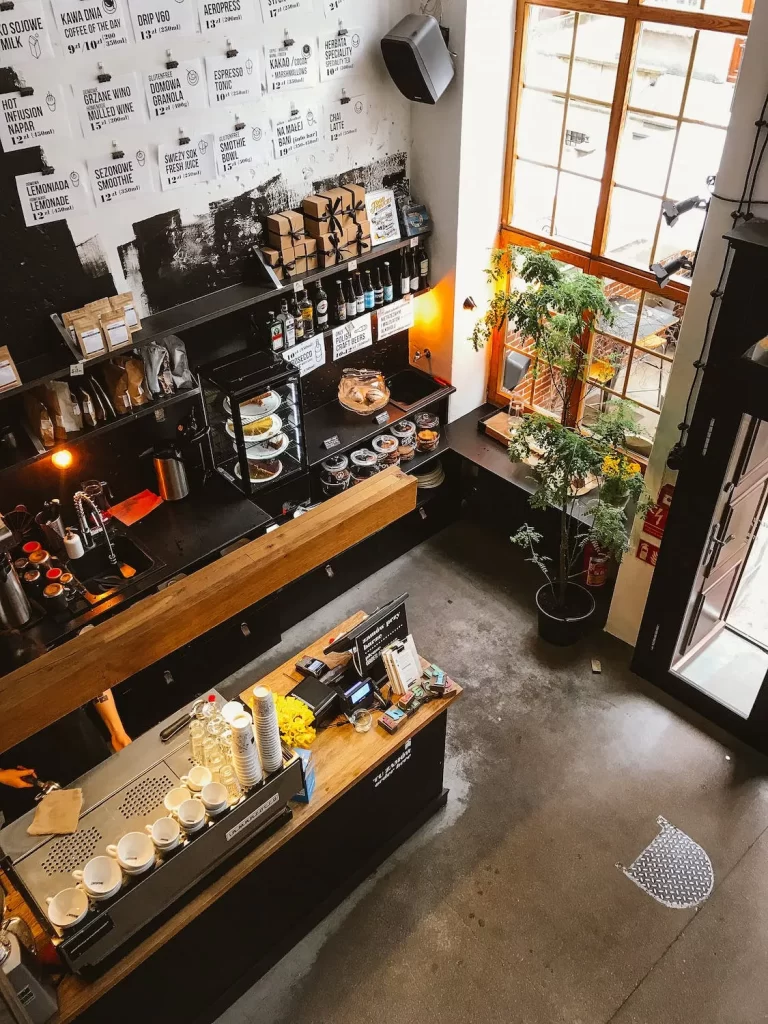
Why Coffee Shop is a Good Business in the Philippines
Growing Specialty Coffee Market
The demand for specialty coffee is on the rise in the Philippines. Consumers are becoming more discerning about the quality and origin of their coffee beans when they’re at the cafe counter.
Today's trend is offering unique and high-quality specialty coffees from startup brands or coffee franchise in the Philippines. A coffee shop that can tap into this new desire and behavior of consumers has the highest potential to attract coffee connoisseurs.
With the specialty coffee market, cafe owners and baristas in the Philippines have begun to create new beverages and mix and match ingredients to cater to the increasing taste changes of their target audience.
For young people, flavored frappes have been a go-to beverage, while for health-conscious consumers, matcha lattes and fruit juices - non-coffee drinks are added to the cafe menu.
Strong Coffee Culture
The Philippines has a rich coffee culture with a growing popularity among coffee enthusiasts. Many Filipinos gather in coffee shops to socialize, work, have fun, and enjoy coffee.
The number of coffee shops built in every town and city in the Philippines has grown since the 2020 Global Pandemic. Many cafes have recovered their businesses, as many companies brought their employees back to work in physical offices.
Filipinos' deep desire for better and longer socialization is seen in long lines waiting for their cups at the counter. A lengthier stay in cafes is also encouraged by cafe owners and baristas, as they’ve seen many people seeking longer intimate moments with friends and families.
Rising Disposable Income
The country’s economy has been steadily growing, leading to an increase in disposable income among Filipinos. With many freelancing jobs and outsourcing opportunities in the country, professionals acquire additional income streams, translating to more spending power to indulge in coffee shop experiences.
They are making the coffee industry a lucrative business opportunity to pursue. In earlier years, you’ll only see corporate professionals conduct meetings and intimate gatherings in coffee shops. Students and young people gather inside cafes, taking Instagrammable pictures for their social media profiles.
This behavior change is a positive signal to invest in the coffee shop business in the Philippines. Foreign brands have recently brought their international taste to the Philippine coffee scene.
Affordable Equipment
The rise of specialty coffee in the Philippines led many coffee suppliers to complement the country's overarching coffee ecosystem. Suppliers for coffee syrups, sauces, cups, and espresso machines in the Philippines, make it easy for budding entrepreneurs to put their cafe brand from scratch.
Affordability, reliability, superior quality, and convenience are key factors cafe owners look for in every coffee shop supplier. While many fly-by-night cafe suppliers exist, you can find a few reliable options locally in the Philippines, including Blend N Sips.
Diverse Menu Options
The coffee shop business in the Philippines has expanded its offerings beyond traditional coffee beverages. Most cafes you’ll visit provide food items, including pastries, sandwiches, and snacks, catering to diverse customer preferences and needs.
This expanded menu allows coffee shops to attract a broader customer, improve customer retention, and ultimately, increase revenue streams.
There are Philippine cafes that offer non-coffee beverages to add up to the increasing demand for tea-based products and frappes, which Starbucks Coffee initially introduced.
By having diverse menu options, you’ll attract more tourists to every go-to city and location in the Philippines - making cafes an additional tourist spot for foreign nationals.
Rising Demand for Co-Working Spaces
The rise of freelancers, entrepreneurs, and remote workers has filled the demand for co-working spaces. This led to starting entrepreneurs to put up their cafes, making them a popular choice for individuals seeking a productive and inspiring environment outside their traditional office settings.
Their buying capability and need to offer a great opportunity for anyone to put a coffee cart, store type, or even a fit-out brand beside co-working spaces or inside corporate buildings. Capitalizing on this trend can lead to a steady stream of customers throughout the day.
Social Media Influence
Filipinos are one of the most tech-savvy people in the world. Their activeness on social media platforms, like Tiktok, often serves as attractive backdrops for Instagram-worthy photos.
Creating visually-appealing designs and Instagrammable spaces for cafes can generate free online marketing through user-generated content, increasing brand exposure and potential new customers.
Social media marketing campaigns can help build a solid brand for startup cafes and, ultimately, any cafe supplier looking to generate more awareness for their brand.
On top of it, you can see other digital marketing channels, like search engine optimization and pay-per-click advertising, to be go-to marketing strategies for starting cafe owners. They can penetrate the local coffee industry with an affordable budget, maintaining their overhead costs at a minimum.
Tourist Hotspots
The Philippines is a popular tourist destination, attracting millions of yearly visitors. This alone can help coffee shops cater to many customers, including domestic and international tourists.
Offering them a place to relax, recharge, and experience a local coffee culture is a unique experience most tourists would love to return to.
If you’re an aspiring coffee business owner, placing your cafe in tourist hotspots is a great way to guarantee foot traffic from regular tourists to hotels, beaches, and other popular destinations in your target city or location.
Community Engagement
Coffee shops can become community hubs, fostering a sense of belonging and community engagement. By hosting events, seminars, workshops, gatherings, and even intimate occasions such as weddings, coffee shop owners can create a sense of loyalty among their customers.
Community engagement can establish the coffee business as an integral part of the local community, which builds a strong coffee culture for the nation.
Invest In A Thriving Business
When investing in a business, one big factor is the profitability and industry you’ll be venturing into. It must be thriving where customer demand is going in the right direction.
Fortunately, the coffee business is one of those thriving industries you can consider as an aspiring entrepreneur. By having a good set of coffee suppliers, a proper location, a targeted marketing campaign, and a strategic business plan, you can create a coffee business that can grow for years.
Why Coffee Shop is a Good Business in the Philippines FAQs
Why is it good to have a coffee shop business?
Having a coffee shop business in your community is beneficial for various reasons. It creates local jobs, stimulates the local economy by supporting other businesses, and promotes a diverse economic landscape. Additionally, sourcing products and services locally can have a positive environmental impact. Overall, small coffee shops contribute significantly to the growth and sustainability of the community.
Is coffee a good business?
Coffee can be a profitable business venture, with most coffee shops becoming profitable within a few years. Success depends on food production costs and key performance indicators (KPIs). By year five, coffee shops can expect their sales to double. Carefully considering budget contingency funds, startup costs, and initial operational expenses is crucial for success in the coffee business.
Why is coffee shop a good business in the Philippines?
Coffee shop business in the Philippines is a lucrative venture due to its high demand and booming industry. With over 2,752 café and coffee shops in the country (2020 data from PSA), it's evident that we are a nation of coffee enthusiasts. Coffee consumption is a common habit among nine out of 10 Filipino households, making it a great market for aspiring entrepreneurs.
Why do people love coffee shops?
People love coffee shops because they provide the perfect cup of coffee that energizes them for the day. Additionally, coffee is considered a part of a balanced diet, which makes it even more appealing. So, coffee at a coffee shop helps individuals feel refreshed and satisfied.
Best Coffee Shop Franchises Philippines
When it comes to the best coffee franchises in the Philippines, the thriving coffee culture of the country provides a fertile ground for aspiring entrepreneurs. The demand for high-quality brews continues to soar in a nation where a cup of coffee represents more than just a beverage.
In this article, we will delve into the world of coffee franchises, exploring the top contenders that have established themselves as the best coffee franchises in the Philippines. From unique offerings to successful business models, these franchises present exciting opportunities for coffee enthusiasts to embark on a rewarding entrepreneurial journey. Join us as we discover the leading players shaping the coffee landscape in the Philippines.
Best Coffee Shop Franchises Philippines
1. Hills & Valleys Coffee Franchise
Turn your love for coffee into a thriving business with Hills & Valleys Coffee Franchise. Every cup of coffee represents passion, dedication, and the pursuit of perfection. As a coffee franchisee, you can be part of this story and share our exceptional coffee experience with customers in your local community.
Choose from our three distinct coffee franchise packages: Deluxe Cart, Fit Out, and Store. Each package is carefully designed to accommodate different investment levels and business aspirations, ensuring that there is a suitable option for aspiring entrepreneurs at every stage of their journey.
Embrace coffee's aroma, taste, and culture by joining Hills & Valleys Coffee Franchise today. Start your journey towards a successful coffee business in the Philippines.

Hills & Valleys Coffee Franchise: Exciting Packages to Kickstart Your Coffee Business
Deluxe Cart Package
Investment: P490,000
Inclusions:
- 5 Years Franchise Fee
- Full Construction Cost
- Franchisee Training
- Operations Manual
- Use of Business name and Logo
- 1 Month Worth of Coffee Supplies
- Espresso Machine
- Grinder
- JTC Blender
- Social Media Advertising (worth P3,000)
- Food delivery app application assistance
- POS (1st 6 months Subscription)
For Inquiries:
Mobile/Viber: 0906 232 0168
Email: hillsandvalleyscoffee@gmail.com
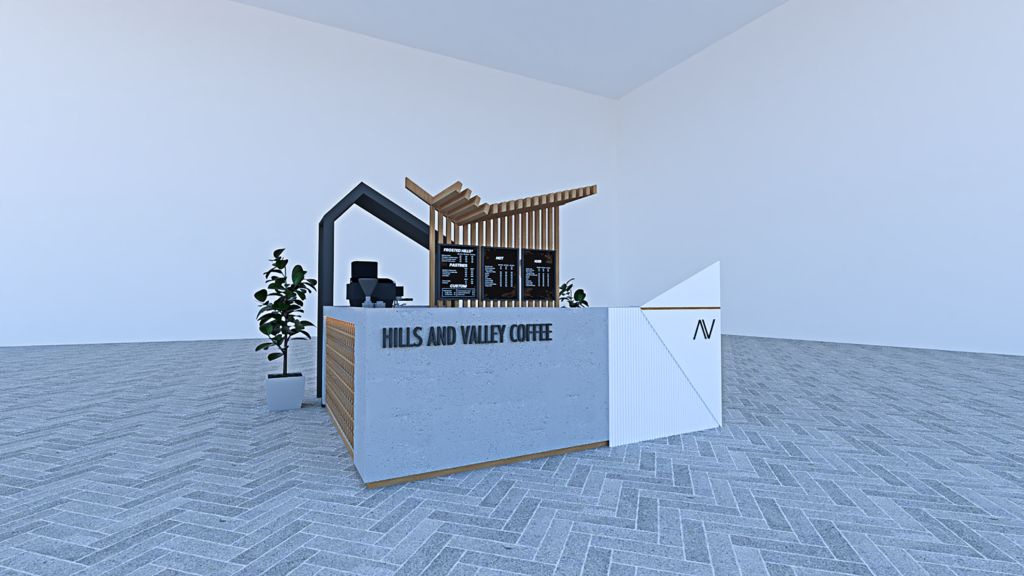
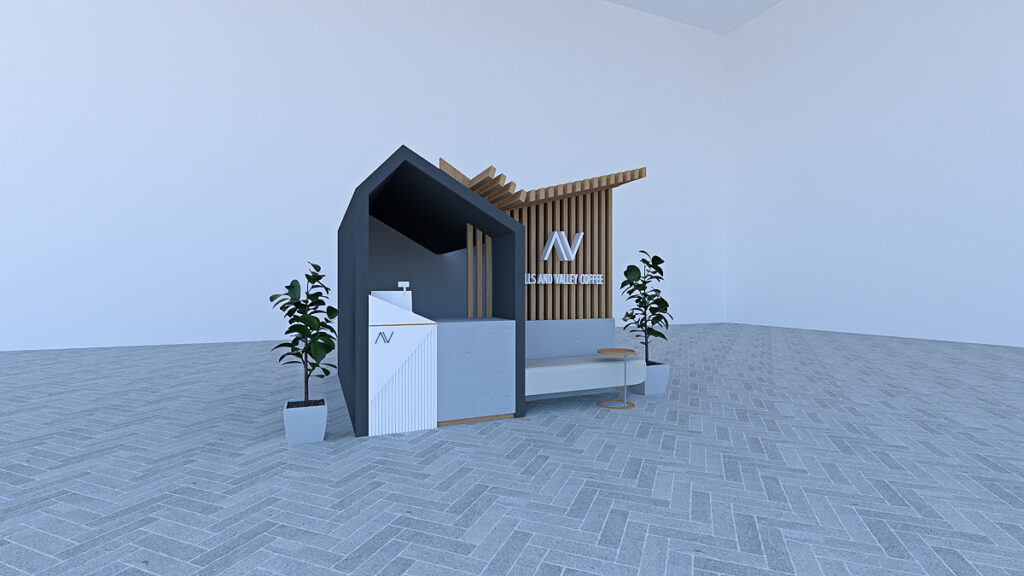
Introducing the Deluxe Cart package—a perfect solution for individuals seeking a versatile and portable coffee business experience. This package offers a fully furnished coffee cart that can be easily positioned at various malls, supermarkets, and other bustling spots.
With the iconic Hills & Valleys Coffee logo adorning the cart, you'll captivate customers wherever you operate. Embrace the freedom and flexibility of this package, creating a professional and welcoming ambiance no matter where your coffee venture takes you.
Cafe Fit Out Package
Investment: P495,000 + Construction Cost
Inclusions:
- 5 Years Franchise Fee
- Franchisee Training
- Operations Manual
- Use of Business name and Logo
- Social Media Advertising (worth P10,000)
- Food delivery app application assistance
- POS (1st 6 months Subscription)
- Breville Dual Boiler Espresso Machine
- Breville Smart Grinder Pro
- JTC Blender
- Supplies and Accessories
- P70,000 free stock credits
For Inquiries:
Mobile/Viber: 0906 232 0168
Email: hillsandvalleyscoffee@gmail.com
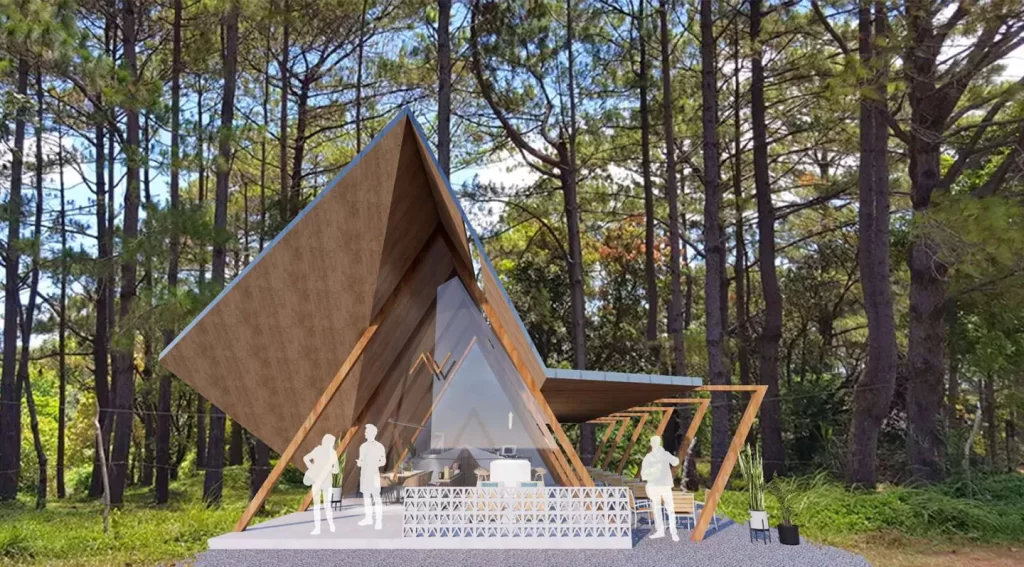
Our Fit Out franchise package is a remarkable opportunity for individuals envisioning a coffee shop with a smaller footprint, specifically for outdoor locations like parks and tourist spots. This package offers a complete turnkey solution to convert a suitable space into a charming Hills & Valleys Coffee outlet.
Our seasoned professionals will collaborate closely with you, ensuring a seamless process from design to execution. Together, we will curate an inviting interior that encapsulates the brand's aesthetic while optimizing functionality and productivity, transforming your coffee shop vision into a vibrant reality.
Store Package
Investment: P495,000 + Construction Cost
Inclusions:
- 5 Years Franchise Fee
- Franchisee Training
- Operations Manual
- Use of Business name and Logo
- Social Media Advertising (worth P10,000)
- Food delivery app application assistance
- POS (1st 6 months Subscription)
- Breville Dual Boiler Espresso Machine
- Breville Smart Grinder Pro
- JTC Blender
- Supplies and Accessories
- P70,000 free stock credits
For Inquiries:
Mobile/Viber: 0906 232 0168
Email: hillsandvalleyscoffee@gmail.com
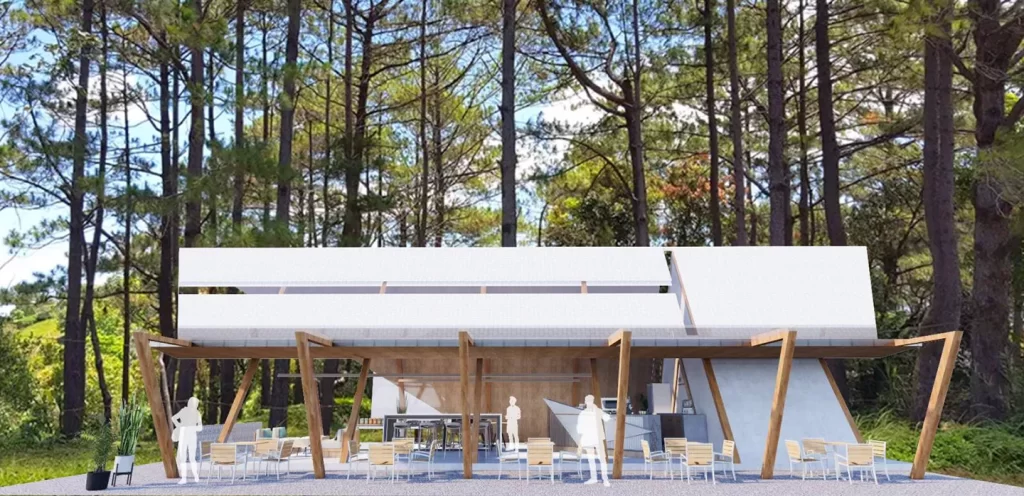
Our Store package presents an exceptional opportunity for aspiring entrepreneurs to create a thriving coffee shop experience within the heart of their local community. This package is thoughtfully designed to cater to indoor locations such as malls, supermarkets, business centers, and commercial buildings.
The Store package gives you access to a spacious area, accommodating a comfortable seating arrangement, a dedicated coffee bar, and an enticing assortment of pastries and sandwiches.
We provide extensive support throughout setup, including site selection, expert interior design services, sourcing high-quality equipment, and comprehensive staff training. The Store package is tailored for those envisioning a bustling coffee destination where patrons can indulge in our premium blends while relishing in a cozy and inviting atmosphere.
For more information and inquiries, please contact us through the following channels:
Mobile/Viber: 0906 232 0168
Email: hillsandvalleyscoffee@gmail.com
2. Figaro Coffee
Figaro Coffee is a renowned coffee brand in the Philippines. It offers a diverse range of high-quality coffee products, including beverages, pastries, pasta, panini sandwiches, and salads. With various franchise models available, Figaro Coffee allows entrepreneurs to join their network and serve exceptional coffee offerings.
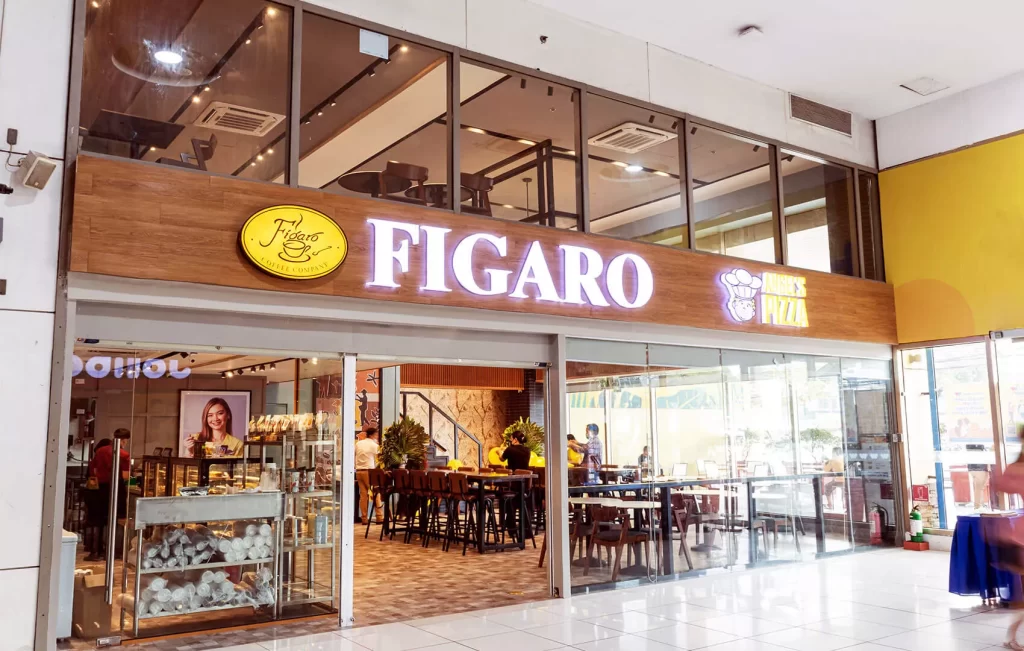
Image Source: Figaro Website
Whether you're a coffee enthusiast or an aspiring business owner, Figaro Coffee presents a well-established and recognized brand in the Philippine coffee industry.
Figaro Coffee offers three different business models for potential franchisees:
Full Store: This model requires a space of 60 to 80 square meters and serves the full line of Figaro Coffee products. The contract term is 8 years, with the option to renew every 4 years thereafter. The renewal fee is 40% of the current franchise fee.
Kiosk Store: This could be a good fit if you have a smaller space of 30 to 40 square meters. The kiosk serves a full line of beverages, pastries, pasta, panini sandwiches, and salads. The contract term is 5 years, with the option to renew every 5 years thereafter. The renewal fee is 40% of the current franchise fee.
Cart/Kiosk: For those looking for a more compact option, this model requires 10 to 20 square meters of space and serves beverages and pastries. The contract term is 5 years, with the option to renew every 5 years thereafter. The renewal fee is 40% of the current franchise fee.
The total investment includes various components like the franchise fee, site assessment, store design, store construction, store equipment, and more. It covers everything you need to start, including initial stocks, uniforms, and marketing collateral.
If you're interested in getting more details or have any questions, you can reach out to the Franchise Department at Figaro Coffee Systems, Inc. Their contact information is as follows:
Phone: (632) 706-0564 | (632) 671-4232 loc 19 | 63932-8468228
Email: franchise@figarocoffee.com
3. Farron Cafe
Farron Cafe traces its roots back to a brilliant business idea conceived by Farwa and Ronnel Hombre, a college couple searching for affordable coffee options that would keep the bank intact.

Image Source: UFranchise
With a modest capital of just Php100,000, their humble coffee shop quickly gained popularity and expanded into numerous branches. Today, Farron Cafe boasts over 600 outlets scattered across the Philippines, captivating the hearts of coffee aficionados everywhere.
As one of the fastest-growing franchise brands in the Philippines, Farron Cafe offers gourmet coffee products that are not only delicious but also competitively priced compared to top brands in the country.
Franchising Options
Farron Cafe provides three enticing franchise options, each with its own unique investment requirements.
Cart: Php168,000 to Php699,000
Kiosk: Php224,000 to Php879,000
Full Cafe: Php280,000 to Php1,200,000
Franchise Inclusions
When you become a Farron Cafe franchisee, you'll receive comprehensive support and valuable resources. These include continuous mentoring, initial supplies and equipment, licensing for trademark and logo usage, local store marketing assistance, and guidance for your soft opening.
Additionally, you'll benefit from site selection assistance and training covering coffee preparation, business operations, and exceptional customer service.
How to Franchise Farron Cafe
Embark on your Farron Cafe franchise journey with these simple steps:
Step 1: Complete the online application form or send an email with a letter of intent, resume, vicinity map of your proposed location, location offer sheet (if available), and the filled-out application form.
Step 2: Attend the scheduled meeting as specified in the email you'll receive from the company.
Step 3: Submit the franchise fee.
Step 4: Carefully review and sign the Farron Cafe Franchise Agreement.
Step 5: Obtain approval for your chosen location. Please note that a minimum area requirement of 10sqm applies for full cafe franchises.
Step 6: Settle the remaining balance.
Step 7: Participate in the Barista Orientation and Training program.
Step 8: Prepare your shop for a successful launch. Photo credit: Farron Cafe / Facebook
For inquiries and further information, reach out to Farron Cafe through the following channels: Contact Numbers: 0922 803 3322 / 8 294 0295 Email: franchisefarrongroup@gmail.com
4. But First Coffee
But First Coffee (BFC) welcomes like-minded individuals who recognize the brand's potential. Within a span of just over 2 years, BFC has achieved remarkable growth, expanding to 90 branches nationwide and continuing to expand its presence.

Image Source: But First Coffee
The application process entails submitting the necessary documents, which are carefully evaluated by the franchising team.
BFC offers a range of franchise packages, with investment costs varying from Php 250K to Php 1.5M. Detailed information regarding return on investment and other franchise-related aspects will be provided upon review and approval of the application.
During the challenging times of the pandemic, when many businesses faced closures, BFC saw an opportunity and established itself as a digital coffee shop. By providing affordable and quality coffee, BFC became a solution for customers while supporting local farmers by sourcing their products. The brand's commitment to accessible, high-quality coffee also created jobs when employment opportunities were limited.
BFC gained attention through features in vlogs, blogs, and positive reviews from notable personalities, influencers, and a loyal customer base. The goal for the end of 2022 is to strategically open branches in business districts, residential areas, and commercial hubs across Metro Manila and other major cities nationwide.
But First Coffee's mission is to make quality coffee accessible to all without the burden of a high price tag.
Indoor Cart (P1,000,000)
- 3 years of Franchise Fee
- Franchisee Training
- Operations Manual
- Use of Business name and Logo
- Opening Marketing Assistance
- Food delivery app application assistance
- POS (1st 6 months Subscription)
- Mobile Cart (Maximum of 12sqm)
- Breville Dual Boiler Espresso Machine
- Supplies and Accessories
- Basic Equipment
- P50,000 stock credits
- Free orientation on Business & Government Permits Application
Outdoor Cart (P1,500,000)
- 3 years of Franchise Fee
- Franchisee Training
- Operations Manual
- Use of Business name and Logo
- Opening Marketing Assistance
- Food delivery app application assistance
- POS (1st 6 months Subscription)
- Mobile Cart (Maximum of 20sqm)
- Breville Dual Boiler Espresso Machine
- Supplies and Accessories
- Basic Equipment
- P50,000 stock credits
- Free orientation on Business & Government Permits Application
Customized Store
- 3 years of Franchise Fee
- Franchisee Training
- Operations Manual
- Use of Business name and Logo
- Opening Marketing Assistance
- Food delivery app application assistance
- POS (1st 6 months Subscription)
- Supplies and Accessories
- Basic Equipment
- P30,000 stock credits
- Free orientation on Business & Government Permits Application
5. Palpitate Coffee
Coffee lovers can discover a coffee shop nestled within an indoor go-kart track. Located in Taytay, Rizal, Palpitate Coffee offers a unique experience where house-blend coffee can be enjoyed alongside the excitement of go-kart racing. It's a haven that caters to both coffee enthusiasts and thrill-seekers.
Situated on the upper floor of Drift Motor Speedway, a go-kart theme park buzzing with high-speed action, Palpitate Coffee provides a serene retreat. The minimalist coffee shop features white furniture and a light wooden floor, creating an ambiance of tranquility and comfort.
Head to the corner cashier and place your order at the counter. Explore the tempting cakes and sweets, perfect for indulging in more than one treat.
Palpitate Coffee offers extensive coffee options to cater to every preference. There is something for everyone, whether craving a piping hot cup or a refreshing iced creation. Don't miss the chance to experience the signature Palpitate Blend, renowned for its rich cedar notes and delightful sweetness—an exquisite choice for coffee aficionados. For a unique and delightful experience, the Palpitate Latte (P160-P180, ~USD2.80-USD3.15) is highly recommended.
For more information on the mechanics and application process, interested individuals can contact palpitatecoffee.ph@gmail.com.
In conclusion, the coffee industry in the Philippines is flourishing, and aspiring entrepreneurs have a range of options regarding the best coffee franchises in the Philippines. The opportunities for success and growth are abundant, from established brands like Hills & Valleys Cafe to other top contenders.
Whether you're a coffee enthusiast looking to turn your passion into a thriving business or an investor seeking a profitable venture, exploring the best coffee franchises in the Philippines is a promising path. Embrace the aroma, taste, and business potential of the thriving coffee culture in the Philippines with these exceptional franchise opportunities.
How to Start a Coffee Shop Business in the Philippines: Ultimate Guide for Aspiring Coffee Shop Owners
The coffee shop business in the Philippines is one of the most in-demand businesses an aspiring entrepreneur can start today. It is a booming industry with over 2,752 café and coffee shops (2020 data source from PSA).
We are a country of coffee lovers. Nine out of 10 Filipino households consume coffee regularly. And total coffee consumption in the Philippines in 2020 alone was about 3.3 million 60-kilogram bags.
These speak volumes of the enormous potential of starting a coffee shop business.
Before jumping into the step-by-step guide on how to start a coffee shop business, let's first see why you want to venture into this million-peso industry.
Why Start a Coffee Shop Business?
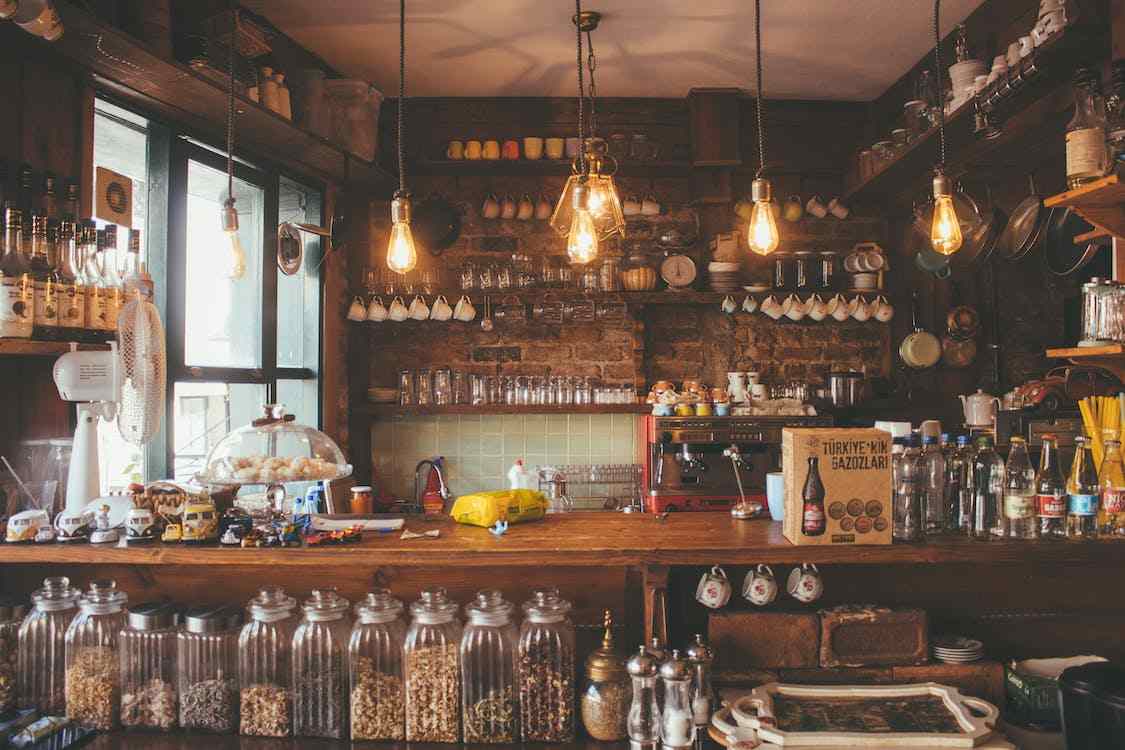
Like any business, you first start by defining your purpose.
If you know your purpose, you will quickly learn the nitty-gritty of starting a business.
In our survey of aspiring coffee entrepreneurs and franchisees on why they start a business, we summarize them into five primary reasons. Here are as follows:
Be An Entrepreneur
The majority of the people we surveyed want to experience dreamt of being entrepreneurs. They aspire to lead teams, make calls for important decisions, and leave a legacy through their business.
Increase More Income
Financial stability is also another reason why people start a coffee shop business. Most people want another income stream while working full-time in their corporate job. No hassle for them as they can have someone work in the industry.
Positively Impacts The Lives of Others
There is no better thing than providing other people with jobs. Giving others an opportunity to make an income is a good source of happiness and one that's meaningful in your own life.
Unleashing Your Creativity
Maybe, you're a barista from your previous coffee business. You may want to explore more creative opportunities for your career - having your coffee shop is an excellent way to unleash your barista skills. You can create different beverages based on your taste and preference and make them good on a menu.
Turning Your Dream into Achievement
You dreamt of owning a coffee shop. Hearing success stories of coffee shop owners is one thing. On the other hand, you probably have tasted good coffee, and it intrigues you to start a coffee shop business. That desire to turn your dream into a reality is your primary reason to create one.
You Get To Be A Part of Coffee Culture
The coffee culture here in the Philippines is interesting. Supplies, manufacturers, small coffee retailers, and baristas gather at conventions and seminars to learn more about each others' best practices and the latest coffee industry trends.
By owning a coffee shop business, you become part of a coffee culture, helping each other grow in their business endeavor and making society a better place.
Flexibility For Your Family
Who doesn't want flexibility? That freedom of time and money you can invest in your loved ones is precious. Anyone would want to sacrifice just to have it in their lives.
As a coffee shop owner, you can experience a flexible time when you have systems and processes in place. You can grow your café while having more time with your family.
Identify your reason for starting a coffee shop business. Be it your source of courage and determination as you grow your business.
The best part is learning the steps to starting one.
How to Start a Coffee Shop Business Philippines (7 Simple Steps)
In this section, we'll go through the exact steps on how to start a coffee shop business in the Philippines.
I've taken the Filipino context to suit your needs as an aspiring coffepreneur. While we provide basic coffee business principles that apply when you start a café in other industries, you'll find most of the actionable tips applicable in the Philippines.
1. Decide on a Budget
The first capital in any business is financial capital. Knowing your numbers, you can prepare well for any expenses you'll incur as you start your coffee shop business.
What specific budget in mind do you have? It is best to start this conversation with yourself if you're going solo, or if you have a family, best to discuss it first with your spouse.
How much are you willing to invest in a coffee shop? Set the amount and write it on paper. You may not have it now, but you can save money every month to reach your target budget.
How much capital is needed for a coffee shop?
It depends on whether you want to start your coffee shop brand (startup) or franchise an existing coffee shop business.
In most cases, you need a higher budget when you franchise a coffee shop business than when you create your own. There are franchise fees involved when franchising a business.
Net, you must decide what route to go: startup or franchise.
2. Choose Between Coffee Franchise Or Starting Your Own Brand
Once you have decided on a budget, your next step is to choose between coffee shop franchise in the Philippines or starting your own brand.
Both have benefits and drawbacks, which you must weigh to see what fits your needs and goals.
Coffee Shop Franchising
This is the most common type of coffee business, given that most aspiring entrepreneurs want a brand with existing systems in place. They don't have to worry about starting from scratch. Instead, they can rely on the coffee franchisor for operations, marketing, and business support.
Here is a contrast of the effects of coffee franchising in the Philippines:
Benefits of Coffee Shop Franchising
Established Brand Reputation - By joining the franchise family of a popular coffee shop, you can benefit from the reputation and brand recognition in the local market. This is best as marketing your product and increasing daily sales for your coffee shop business will be easy.
Proven Business Model - The coffee shop franchise has a successful business model that has been tested in the market. This reduces your risk of failure when you jump into a business venture.
Training and Support - The best coffee shop franchise in the Philippines offers comprehensive training and ongoing support to its franchisees to make their operations run smoothly. With business support, coffee franchisees are more confident in leading their baristas and conducting their operations properly.
Scalable Marketing and Support - With brand recognition and a good reputation, coffee franchisees can benefit from their franchisor's national and regional marketing and advertising campaigns. All benefits from their marketing campaigns can affect the sales generated from every coffee branch.
Drawbacks of Coffee Shop Franchising
High Initial Investment - Starting a coffee franchise requires a higher upfront investment, as it includes franchise fees to pay for using the trade name and all of its products. It is not negative, as you'll add only more to the tested business model the franchisor has made over the years.
Royalty Fees - Some coffee franchising agreements have franchisees pay their franchisor ongoing royalty fees, ranging from 3 to 8% of the monthly gross sales. It is best to ask for this percentage from your potential coffee franchisor.
Limited Control Over The Business - Franchisees are required to operate their business within the boundaries set by the franchisor. Franchise agreements have guidelines and standards that may limit your flexibility as a coffee franchise. For example, in most cases, you can't simply add any products to the menu, as the franchisor himself will provide new products for their coffee franchises.
Restrictions On Location and Territory - Franchisees may be restricted in operating a business in a certain location to not compete with similar branches. However, you can agree with your franchisor on the number of franchised branches you want to put up in specific areas.
Hills & Valleys: Best Coffee Shop Franchise in the Philippines

If you're considering franchising a coffee shop in the Philippines, Hills & Valleys may be a great option. Here are some reasons why:
Proven Profitable System: Hills & Valleys Coffee has a proven track record of success in the coffee industry. By offering affordable yet high-quality coffee beverages, you can attract and retain a solid customer following for your business.
Targeted Market: Hills & Valleys Coffee focuses on serving the rural markets that other expensive competitors may not be catering to. This makes it a strategic choice for entrepreneurs looking to tap into these markets while being located in high-traffic areas.
Holistic Approach: Hills & Valleys Coffee offers a holistic approach to franchising as one of the best coffee franchises in the Philippines. In addition to sharing our knowledge, we provide skills training for your staff, including barista training, and help you market our best-selling products through an effective marketing strategy.
By becoming one of our franchisees, you will receive support every step of the way, from training and marketing to ongoing assistance in running your business.
Startup Coffee Shop
This is another route that you can take if you want to start a coffee shop business. There are many benefits of doing so, while a list of drawbacks to balance it out.
Benefits Of Startup Coffee Shop
Creative Control. As a startup coffee business owner, you have complete creative control over the menu, branding, and the entire direction of your business. You can decide where your next branch will be and what type of decor and coffee theme you wish to create. All this is one primary benefit of a startup coffee business.
Flexibility. This is related to the first benefit but more to the constraints of a franchise agreement. In a startup coffee business, you can experiment with new products, menu items, and even the latest marketing strategies to find what works best for your business.
Lower initial investment. Starting a coffee business from scratch can be less expensive than getting a franchise of a popular brand. Depending on the size and scope of your operation, you can choose a more affordable option that fits your budget.
Strong Customer Relationships. Given that you're starting, you can build a loyal customer base by implementing personalized service options and creating a unique atmosphere inside the cafe.
Potential for Higher Profits. A startup coffee business has the potential to generate higher profits as you don't have to pay royalty fees to your coffee franchisor. You can even put new branches in your store without paying additional franchise fees. All these can lead to decreasing the cost and getting more profit for your coffee business.
While there are benefits to starting your own coffee business, there are also drawbacks you have to consider, mainly:
Drawbacks of Startup Coffee Shop
Lack of Brand Recognition: At the start, you have to put a hundred percent effort into building your brand by establishing a customer base from the ground up. This may be challenging, but you can build brand awareness for your startup coffee business with effective marketing strategies.
Limited support and resources: If you're a sole proprietor, this is even more challenging as there is only one mind thinking about what to do in your operations, marketing, and other important things in running the business. You don't have access to the resources and support offered by a larger franchise network.
Higher risk of failure: Starting a business from scratch involves more risk than getting a franchise. There is no proven track record or business model you can replicate, which means you'll have a 50/50 chance of succeeding in a startup cafe.
Limited Bargaining Power: You also have to build relationships with suppliers from scratch, which is crucial in lowering the cost of goods sold. If you can negotiate better, you can have lower operating costs, which means higher profit for your business. Otherwise, supply costs can eat up largely your profits.
Time-intensive: Starting a coffee business requires significant time and effort, from looking for the right suppliers to creating a menu and marketing your brand. All these are necessary to ensure you're likely to succeed as a coffeepreneur.
Types of Coffee Shop Businesses
Whether pursuing a franchise coffee shop or starting your coffee business from scratch, you need to identify the type of coffee shop business that suits your preference, style, and taste.
Coffee Bar, Cart, or Kiosk
A coffee bar, cart, or kiosk is a small, compact coffee shop offering customers grab-and-go beverages. These coffee shops are popular in urban areas, airports, and train stations, where people always hurry and need their coffee fixed quickly.
You can choose this type of coffee shop if the location has a fast-moving flow of foot traffic. This means that people are less likely to dine in and enjoy their coffee inside the store. You may not maintain your customers longer as they either rush home or have errands.
Coffee Store
A coffee store is a more traditional coffee shop with indoor seating and a relaxed atmosphere. Customers can sit, enjoy coffee, socialize with friends, or work on laptops. Coffee stores often have a wider selection of food items, such as pastries, sandwiches, and salads.
Choose this coffee type if you dreamt of interacting with your customers, making them feel at home, and creating an atmosphere of true coffee lovers you'd love to serve with your coffee.
Drive-thru Coffee Shops
Drive-thru coffee shops are perfect for customers who are on the go and don't have the time to sit down and enjoy their coffee. These shops offer a convenient way to grab a quick cup of coffee without leaving the comfort of their car.
Some popular coffee brands here in the Philippines, like Starbucks, The Coffee Bean and Tea Leaf, and Dunkin Donut, combine both a coffee store and a drive-thru, making them cater to both markets of people wanting to dine in and on the go.
Pop-up and mobile coffee shops
Pop-up and mobile coffee shops are a newer trend in the Philippines and other Asian countries. These coffee shops, such as farmers' markets, festivals, or special events, are usually located temporarily. They are designed to offer customers a unique coffee experience and often serve specialty drinks unavailable in traditional coffee shops.
If you want to locate your shop in major locations with a wide range of customers, the pop-up and mobile coffee shop is for you. It is also good for anyone who is looking for a lesser cost on their rent.
3. Comply with Legal and Regulatory Requirements
The registration process here in the Philippines can be quite complex, so it's important to be prepared and know what documents you need to secure.
First, if you're setting up a corporation or partnership, you must secure the SEC Articles of Incorporation. This document proves that your business is registered under Philippine laws. You will need to provide documents such as a name verification slip, articles of incorporation, joint affidavit of two incorporators to change the corporate name, and more.
If you're registering as a sole proprietorship, you'll need to get a DTI Registration Certificate, which authorizes you to use your trading name and secures it from being used by someone else.
You will also need to get a BIR Clearance, which is required before you can get other permits. This clearance is issued by the Bureau of Internal Revenue and can be obtained by filling up one of the BIR forms depending on your business type.
You also need to secure a Barangay Clearance, which certifies that your business complies with the local requirements of the barangay where your business is located.
Last, you must secure a Mayor's Permit, also known as a business permit. This permit ensures your business is safe to operate under your city's ordinances. You can only obtain this permit after you've registered your business with DTI and SEC, and secured the necessary clearances.
It's important to note that compliance with local zoning and building codes is also essential in setting up your coffee shop. You should be aware of the tax requirements for your business. By ensuring you have all the necessary permits and clearances, you can ensure that your coffee shop is legally registered and operating smoothly.
Here are resources you can check out for more references on how to register your business:
- https://www.securitybank.com/blog/how-to-register-your-online-business-in-bir-and-dti/
- https://grit.ph/register-corporation/
4. Learn About Cafe Management
Cafe management is a huge part of running a coffee shop business in the Philippines. There is where you learn about hiring and managing employees, inventory management, bookkeeping, accounting, and maintaining a clean and safe environment.
Let's first start with hiring and managing employees.
Hiring and Managing Employees
The coffee shop is a service business and will require tremendous time to invest resources in your people. They'll be the ones to brew coffee and serve your customers, so it's important to have the right people in your cafe.
In hiring good employees, you must first set the criteria for an employee who works in your coffee shop. You can use the Iceberg Model of Competencies to identify an ideal employee. Competencies include knowledge, skills, social role, self-image, traits, and motives.
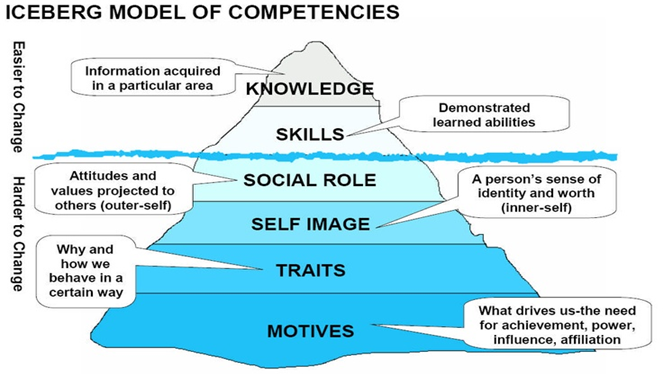
Here are some actionable tips for choosing the right barista based on each competency.
Quick note: Set expectations for the required experience you're looking for in a potential candidate. For startup and even franchise coffee shop businesses, you can consider fresh graduates with no skills and knowledge in coffee brewing.
This list below gives you ideas about the competencies you should aim for your baristas for training.
Knowledge:
- Look for applicants who understand coffee brewing techniques and espresso-based drinks well.
- Consider applicants who know different coffee beans and their flavor profiles.
- Give preference to applicants who have some knowledge of the history and cultural significance of coffee.
Skills:
- Look for applicants with latte art experience who can make drinks quickly and efficiently.
- Look for applicants with a strategy for managing multiple drink orders simultaneously.
- Consider applicants who have experience dealing with difficult customers and complaints.
Social Role:
- Look for friendly, approachable applicants who can create a positive customer experience.
- Consider applicants who have experience working collaboratively with other baristas and team members.
- Look for applicants who understand and can represent the coffee shop brand and culture.
Self-Image:
- Look for applicants who can stay calm under pressure and handle unexpected situations.
- Consider applicants who have experience staying organized and efficient during busy periods.
- Look for applicants who have a positive attitude and energy throughout their shifts.
Traits:
- Look for detail-oriented and focused applicants who take pride in their work.
- Consider applicants who are adaptable and able to handle unexpected situations.
- Look for applicants who have a friendly and approachable personalities.
Motives:
- Look for applicants who are passionate about the coffee industry and motivated to learn and improve their skills.
- Consider applicants who have experience staying motivated during slower periods.
- Look for applicants open to feedback and willing to learn and improve continuously.
This list may not be exhaustive, but enough to give you a head start for your exam and/or interview process.
For franchise coffee shops, you mostly get assistance and support when hiring baristas. This lessens the workload you need to start your cafe.
Inventory Management
Inventory management is another critical competency in running a successful coffee shop. This includes managing the supply of coffee beans, milk, syrups, sauces, and other ingredients you need to craft your beverages.
You must also monitor other supplies, such as cups, napkins, straws, and stirrers.
It is important to keep track of supplies and have your own inventory management system and documents to ensure you're not completely running out of stock.
For franchise coffee shops, there is an advantage of having specific inventory management from the franchisor to help you monitor all ingredients and supplies.
Effective inventory management can help organize your supplies, keep track of inventory levels, and avoid waste.
Bookkeeping and Accounting
Bookkeeping and accounting are essential in keeping accurate records of sales and expenses, managing payroll, and paying taxes.
To keep track of sales, you can have Point of Sale software to capture every transaction and its corresponding amount easily. So you can easily export a file whenever you want, such that at the end of every month, to know your gross sales.
At our coffee shop in Bulacan, we use Utak POS, an affordable POS most coffee shops here in the Philippines use for in-store transactions.
For expenses, you can hire a bookkeeper or a professional accountant to help you organize all receipts and track all expenses. This would allow you to focus on other cafe management areas, helping you grow your business further.
Maintaining a clean and safe environment
Customers want a clean and safe environment inside coffee shops. So it's critically important to have a system to maintain cleanliness.
Here are simple tips for maintaining a clean and safe environment post-pandemic:
- Regularly clean and sanitize all surfaces and equipment, including countertops, tables, chairs, and coffee machines.
- Ensure that all food is stored and handled properly and that all staff is trained in food safety and hygiene practices.
- Implement regular hand washing and sanitizing protocols for both staff and customers.
- Use disposable or single-use items, such as paper cups and utensils, to minimize the risk of contamination.
- Provide customers with a welcoming and comfortable atmosphere by maintaining a clean and tidy shop and offering high-quality coffee and food. This can help to build a loyal customer base and attract new customers.
5. Find a Suitable Location and Select the Right Equipment
If you find a great location for your coffee shop business, you win 50% of the battle. The reason is that physical stores in locations where there is medium to high foot traffic get more customers than those in distant areas.
Here are two location points where you can place your cafe to make it a winning coffee shop, even if you're not starting yet.
Best Nearby Locations
Near hospitals/schools/parks
Set up your coffee shop near hospitals, schools, or parks where there is a high volume of foot traffic. Scout the area first and see the flow of potential customers in your target location. The higher volume of foot traffic, the higher chances you can attract more customers and increase your sales.
Inside malls
Malls can be a good location for a coffee shop business as they already have a steady stream of customers throughout the day. However, you need to take note of the sale percentage the mall requires, as it can affect your profit margin.
Purchasing Equipment and Supplies
A huge part of your investment if you decide to start your coffee shop from scratch goes into purchasing equipment and supplies.
This is where you should be most careful, as the right equipment and supplies can affect the quality of your coffee.
Here is the top equipment you'll have to purchase for your cafe:
Coffee brewing equipment: Invest in high-quality coffee brewing equipment that can produce consistent, great-tasting coffee. This could be coffee makers, French presses, and drip machines.
Espresso machines: If you plan to offer espresso-based drinks, invest in a good quality espresso machine. The better your espresso machine is, the better quality of coffee you can make. Example is this list of Starbucks drinks in the Philippines.
At Hills & Valleys Cafe, we prefer to purchase espresso brewing machines.
Some good recommendations for brewing machines are:
- Breville
- La Marzocco
- Nuova Simonelli
- Rocket Espresso
Coffee grinders: A coffee grinder is another essential piece of equipment that helps you grind coffee beans to the perfect consistency for your brew.
Refrigerators and freezers: You'll need refrigerators and freezers to store milk, cream, and other perishable items.
Cups, saucers, and utensils: Don't forget to stock up on cups, saucers, and utensils. Choose sturdy, high-quality options that can withstand repeated use.
Coffee beans and other ingredients: Invest in high-quality coffee beans and other ingredients, such as syrups, to create delicious drinks that keep customers returning.
The Philippines produces several types of coffee beans, including:
- Arabica: This type of coffee is grown in the highlands of the Philippines and is known for its mild, fruity flavor and aroma.
- Robusta: This type of coffee is grown in lowland areas and is known for its strong, bitter flavor and high caffeine content.
- Excelsa: This coffee is grown in the southern part of the Philippines and has a unique flavor often described as fruity and smoky.
- Liberica: This type of coffee is grown in the Batangas region of the Philippines and has a distinctive aroma and flavor, often described as nutty and floral.
In coffee shops in the Philippines, you will typically find a variety of coffee beans available, including blends that combine different types of beans to create unique flavors and profiles.
Marketing materials and suppliers: You'll also need to find suppliers for menu boards, A4 posters, and other marketing suppliers. Finding a good graphic designer to help you with your daily social media content to attract new customers to your cafe is best.
6. Select Your Ideal Coffee Shop Aesthetics and Concept
Your cafe design and theme will determine the atmosphere you want to set for your customers. It is best to choose it based on what your customers want in your city or location. An appropriate cafe design and theme makes it more enticing, plus gives the vibe you're caring for your customers.
There are several popular coffee shop themes in the Philippines, including minimalist, Korean, rustic, industrial, boho chic, indoor garden, and pop culture-themed.
Here is a run-down of what each of these types means for you:
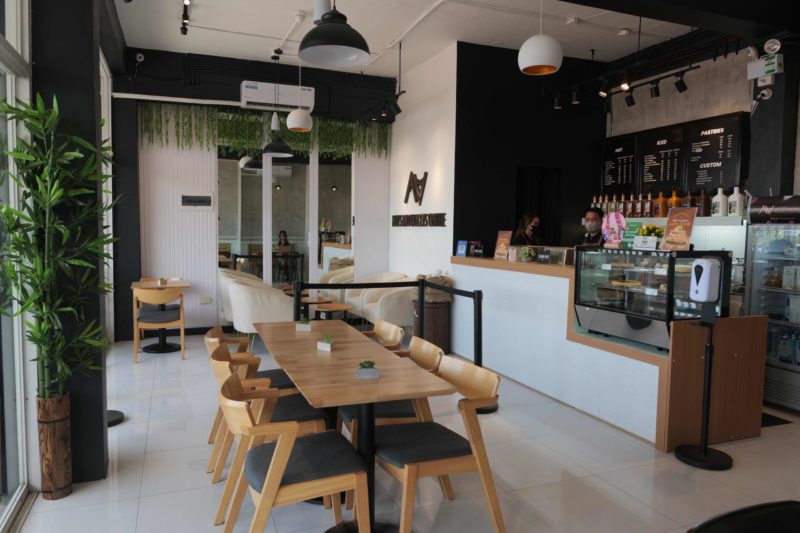
A minimalist coffee shop theme is characterized by clean lines, neutral colors, and simple decor. This cafe type is ideal for customers who want a quiet and calming environment to work or relax in.
Korean coffee shops are inspired by the trendy cafes in Seoul, focusing on minimalist design, pastel colors, and unique food and beverage offerings.
Rustic coffee shops often have a cozy and inviting atmosphere, with wooden furniture, exposed brick walls, and vintage decor.
Industrial coffee shops feature raw materials like concrete and metal, giving them a modern and edgy vibe.
Boho chic coffee shops are characterized by bright colors, bold patterns, and an eclectic mix of furniture and decor.
Indoor garden coffee shops incorporate plants and natural elements into the design, creating a serene and refreshing atmosphere.
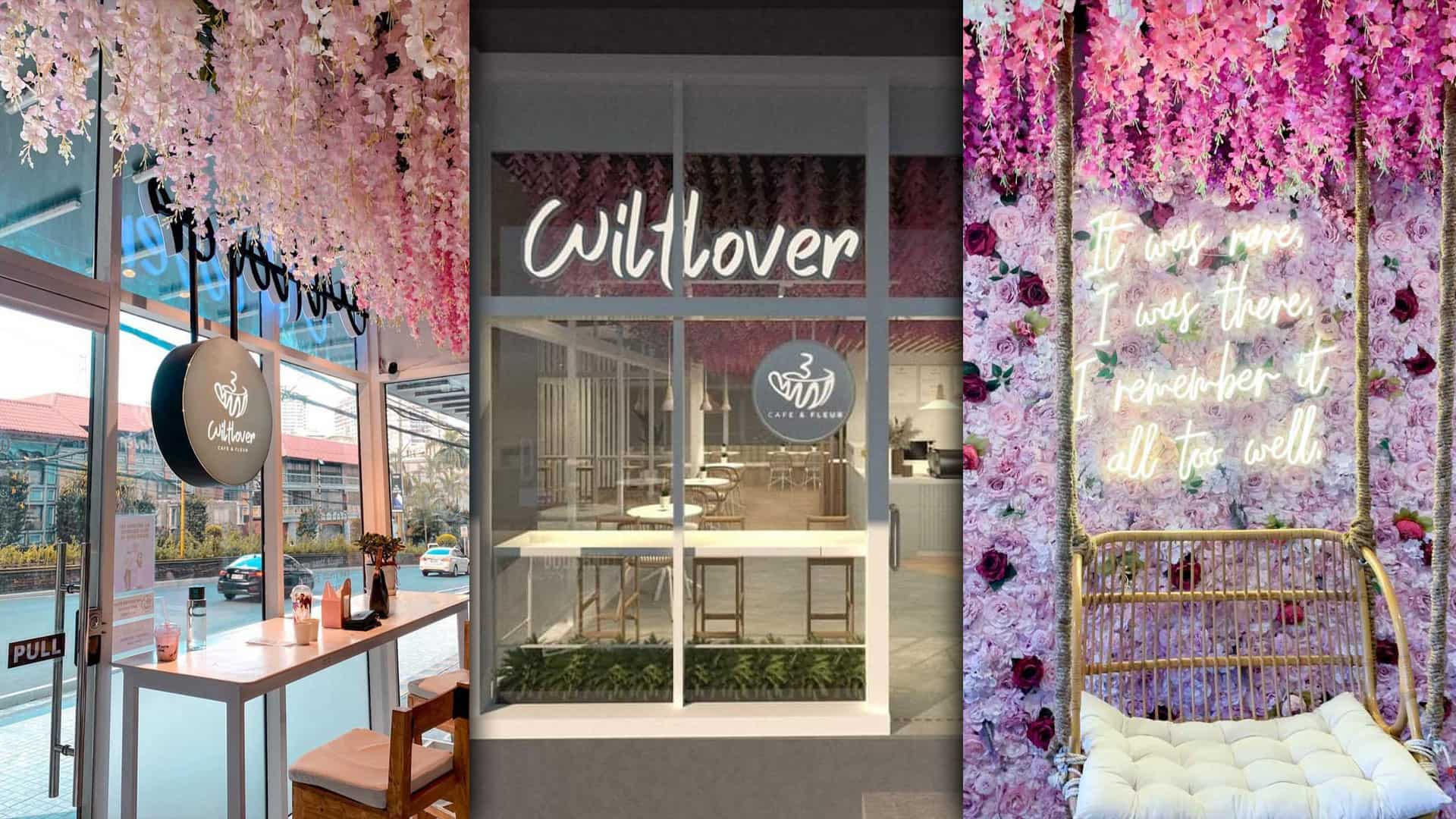
Pop culture-themed coffee shops are perfect for customers who are fans of movies, TV shows, or music. These cafes often have decor and menu items inspired by popular franchises or artists.
7. Understand How Sales and Marketing Work
Sales are the lifeblood of a coffee shop business. Marketing drives new customers to your cafe. These two key business components are essential to growing your coffee business, whether a startup or a franchise.
As an aspiring entrepreneur, you can apply sales forecasting to your business.
Sales Forecasting
Sales forecasting is estimating how much revenue you can expect to generate. Though many variables affect sales, it is still important to have a good sales number in mind to target every month.
Coffee shops typically consider the number of customers served daily, average ticket price, and operating hours to calculate sales.
To calculate profit, coffee shops subtract their total expenses from their revenue. This includes the cost of goods sold (COGS), rent, labor, utilities, and other operating expenses.
Here are more resources to learn basic knowledge about sales forecasting:
Factors That Affect Sales of Coffee Shops in the Philippines
Several factors can impact the sales of a coffee shop in the Philippines.
One primary key factor is location. If a cafe is easily accessible and located in high-traffic areas, you can expect it will have more sales as it attracts more customers.
Another thing to do considers is customer demographics. Coffee shops cater to different age groups or interests and may have different loyal customer bases.
If you have identified your target customer and ensure you're doing the right marketing strategy to appeal to them, you'll get more sales in return.
Lastly, competition. The higher the competition in your location area, the more challenges you may have to attract customers.
Effective Marketing Strategies
You need to promote your coffee shop and attract customers to get more in-store and delivery sales.
There is a misconception for franchise coffee shops that they don't need to do any marketing campaigns. Partly true, given that the main branch or franchisor has an existing marketing team and effective marketing campaigns to promote every brand, including its franchise cafes.
However, it is best to own your franchise store and do the necessary marketing to attract new customers - aligned with your franchisor's overall marketing strategy.
For startup coffee shops, here are some ways to get new customers and entice existing customers to buy more from you.
Social Media Marketing Strategies
Invest in creating social media posts that are appealing to your target audience. You can hire a freelance graphic designer or do it yourself with Canva. Then, write captions that entertains or educates, alongside call-to-actions, to encourage your audience to visit your stores.
Social media platforms like Facebook, Instagram, and Tiktok are some places to publish content to bring more awareness to your brand.
You can invest in Facebook Advertising to push more discount promos and holiday or seasonal promotional campaigns to get more reach in your target area.
In the Philippines, you can use Facebook Ads to get as low as Php10.00 to acquire a customer by sending you a message on your Facebook page.
Customer Loyalty Programs
Customer loyalty programs are another effective marketing strategy as you encourage customers to return to your cafe and make repeat transactions. You can add freebies to every number of purchases they make; this gives your customers a reason to buy more from you.
Live Events
Live music performances are one of the trending and effective marketing strategies of coffee shops in the Philippines. By giving their customers free entertainment and good vibes, they improve their customer experience.
Ask For Google Business Reviews
If you've made a great customer experience, it is best to ask your customers for a review on your Facebook page or, better, on your Google Business.
First, you have to set up your Google Business. You can read this guide to start your own.
You can create an A4 poster with a QR code and/or link to your Google Business review section. Your customers can scan the QR code, go to the link, and write a review about their experience in your coffee shop.
Customer reviews serve as testimonials of the level of experience and quality of products your cafe offers to customers. This brings in new customers when people search for specific keyphrases, looking for available coffee shops within the area (e.g. coffee shop san jose del monte bulacan).
8. Familiarize Yourself With Cafe Operations and Customer Service
Cafe Operations
Cafe operations refer to the various activities involved in running the day-to-day workflow of a coffee shop or cafe.
These include menu planning and pricing, food safety and sanitation, workflow optimization, quality control, staff training and development, and customer experience (more on this topic later).

Menu Planning and Pricing
You must offer a range of beverages and pastries catering to your target market's tastes and preferences. This will comprise your menu. Knowing what type of menu and its inclusions is critical to ensuring your customers get the best products from you.
It is best to conduct market research among all coffee shops in the Philippines, as well as upcoming trends in the global coffee scene, to get insights into what beverages and food you should cater to your customers.
Aside from menu planning, consider the pricing of your coffee. Pricing your products affects your monthly profits. So ensure you know what your target product pricing is.
Here is an example of a menu for a coffee shop in the Philippines:
| Item | Price (PHP) |
|---|---|
| Espresso | 90 |
| Americano | 120 |
| Cappuccino | 140 |
| Latte | 150 |
| Mocha | 160 |
| Iced Coffee | 120 |
| Cold Brew | 140 |
| Hot Tea | 80 |
| Iced Tea | 90 |
| Fruit Smoothie | 180 |
| Classic Milkshake | 140 |
| Special Milkshake | 180 |
| Chocolate Drink | 120 |
| Matcha Latte | 150 |
| Chai Latte | 140 |
| Hot Chocolate | 120 |
| Fresh Juice | 100 |
| Bottled Water | 40 |
| Pastry | 60-120 |
| Sandwich | 120-200 |
| Salad | 150-250 |
| Pasta Dish | 200-280 |
| Cake Slice | 100-150 |
Food Safety and Sanitation
For any food-related business like a coffee shop, maintaining high food safety and sanctification standards is critical to success. Look for the basic and advanced relevant regulations and guidelines to protect your customer's health.
Workflow Optimization
Streamline your coffee shop's workflow to serve your customers quickly and efficiently. If you can reduce wait teams, this can increase customer satisfaction and thus, improve their overall customer experience.
Analyze your operations. Check your production areas. What are the things you can improve to remove any inefficiency and things which may be causing delays? Consider rearranging your furniture and equipment to develop a more efficient store layout.
Quality Control
Consistency in product quality is essential in a coffee shop. This is particularly important if you're expanding your coffee shop to other locations, i.e. adding more branches for your startup coffee shop.
You want to ensure all your products meet the same high standards every time. So seek quality control by regularly conducting a taste test of your coffee and other products to ensure they're up to par.
Customer Service and Experience
The coffee shop with the best customer experience wins. Why? It is simply because if your customers feel they're being served well and have the highest level of customer touch and experience, they're likely to return to your store, increasing your overall sales.
So, think of ways how to create a positive customer experience. Consider factors such as ambiance, music, lighting, vibes, and anything else to design your coffee shop well.
You can also engage with your customers and ask for direct feedback, so you know any room for improvements in their customer experience.
It is also important to train your baristas to deal with customer complaints. Not all customers you'll be able to please, so have your staff trained enough to handle complaints effectively and empathetically. Develop a process for resolving issues quickly.
Coffee Shop Success Factors and Challenges
What Makes a Cafe Successful?
What makes a cafe successful is the quality of products and services, atmosphere and ambiance, location and accessibility, and strong customer base.
Let's dive into each coffee shop's success factors.
Quality of products and services. The quality of your coffee, pastries, and service will greatly impact the success of your coffee shop. People buy your products, so use high-quality ingredients, invest in quality equipment, and always train your staff to provide excellent customer service.
Atmosphere and ambiance: Create an inviting atmosphere where customers love to enjoy, relax, and return for more. Consider decor, lighting, music, and seating arrangements to create a safe and positive vibe that people will want to invest time in your store.
Location and accessibility: Choose the right location with high foot traffic to attract more customers. Always consider the demographics of your customers and ensure you're hitting it head-on with the proper location.
Strong customer base: Apply the marketing strategies shared earlier to attract new customers and retain your existing customers. By providing customer loyalty programs, live events, and social media promotions, you can create a marketing campaign appealing to your target market.
Challenges Faced by Coffee Shop Businesses
Starting and running a coffee shop business in the Philippines can be challenging. Here are some of the most pressing challenges faced by coffee shop owners.
High competition: High demand for coffee equates to high competition in the number of coffee shops constantly opening up. So you must find ways to differentiate your coffee shop from others in your location.
Rising costs of ingredients and supplies. With inflation and many other factors, the costs for ingredients like coffee beans and milk can fluctuate, impacting your cost of goods sold and profit margins. It's important to regularly review your costs and adjust your prices accordingly to remain profitable.
Customer retention and loyalty: It is not easy to retain customers today. The more options your customers have, the fewer chances it is to get customer loyalty. Creating a solid customer atmosphere and developing new marketing strategies can build a great customer experience and customer base.
Employee turnover: Hiring and training new employees is resource-intensive. And thus, you need to retain your employee as long as possible to reduce employee turnover and training costs.
These challenges can be difficult to overcome, but staying current on current industry trends and best practices can improve your operations and properly set up your coffee for success.
Coffee Shop Philippines Frequently Asked Questions
How much does it cost to open a coffee shop in the Philippines?
Opening a coffee shop in the Philippines can cost around ₱1,250,000 for the shop setup, equipment, and permit, plus about ₱155,000 for monthly expenses like rent, utilities, supplies, marketing, and staff costs.
How to start a small coffee shop business in the Philippines?
To start a small coffee shop business in the Philippines with a low budget, carefully plan your expenses, choose a strategic location, and consider offering specialty coffee or unique blends to attract customers. Additionally, consider cheaper alternatives for furniture and equipment, utilize social media marketing, and establish relationships with local suppliers to minimize costs.
Is a coffee shop a profitable business?
Yes, a coffee shop can be a profitable business. Generally, most coffee shops start to generate profits within the first few years, with sales expected to double by year five. To ensure profitability, managing startup costs, budget contingency funds, and carefully monitoring operations costs in the first year is important.
What qualifications do you need to run a cafe?
There are no specific qualifications required to run a cafe in the Philippines.
However, it can be helpful if you attend training, seminars, workshops, and certifications to have experience in the food and beverage industry.
Is owning a coffee shop stressful?
Owning a coffee shop can be stressful, especially starting it from scratch.
However, with careful planning and proper execution, many coffee shop owners find it to be a rewarding and fulfilling business.
Is coffee a good investment?
Coffee can be a good investment, as it has a high demand and profit margin.
What percentage of cafes fail?
Some studies show up to 60% of cafes fail within the first year. This highlights the importance of careful planning, management, and market research before starting a coffee shop.
Can I run a cafe with no experience?
You can run a cafe with no experience.
However, having enough experience or a business background is important to avoid mistakes and succeed early in running a cafe.
What does a small cafe need?
A small cafe needs basic equipment such as an espresso machine. It also needs a menu, a point-of-sale system, and business permits and licenses to operate legally.
What are the problems in a coffee shop business?
Some common problems in a coffee shop business include high competition, rising costs of ingredients and supplies, customer retention and loyalty, and employee turnover.
Do coffee shop owners make money?
Coffee shop owners can make money, depending on location, competition, pricing, and management. It's important to plan and manage the business to ensure profitability carefully.
Author’s Note: This entry was optimized by the best Link Building Services Agency in the Philippines – SharpRocket.


